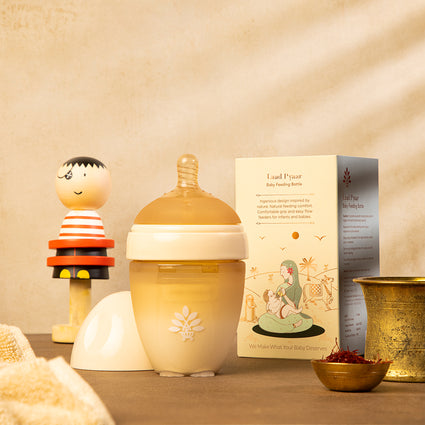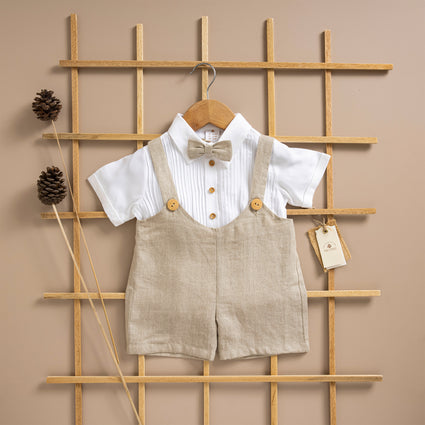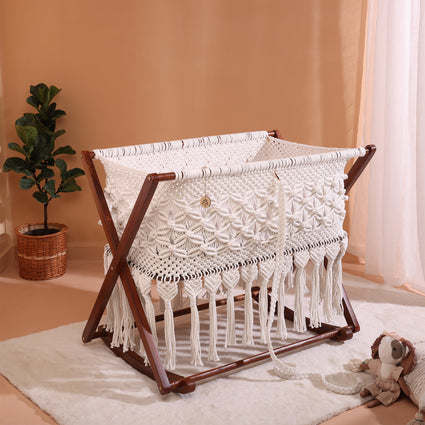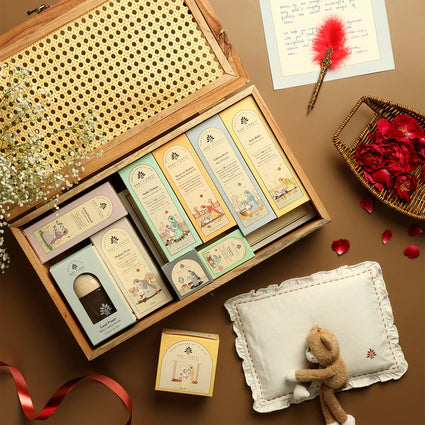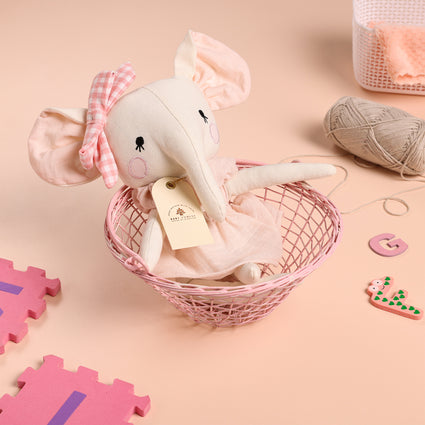Baby Care & Parenting Blogs

Adorable Baby Names That Start with A
Choosing a name for your baby is such a fun and exciting journey! It's not just a word—it's a piece of their identity, a story waiting to be told, and maybe even a legacy in the making. If you're on the hunt for a name that's unique, meaningful, and starts with the letter A, you're in the right place!
There's something special about names that begin with the letter A—they carry a timeless charm and are often linked to qualities like strength, leadership, and creativity. Whether you're drawn to classic names or something fresh and modern, we've gathered some of the most adorable baby names, starting with letter A, to help you find the perfect fit for your little one.
Baby Names Starting with A
Here's a list of some beautiful Indian baby names starting with the letter A. These names are trending in 2025 and hold deep meanings, making them perfect for your baby boy or girl.
50 Baby Boy Names Starting with A
- Aadesh – Command, message
- Aadi – First, beginning, Lord Shiva
- Aadit – Peak, limitless
- Aaditya – Sun God
- Aahan – First ray of sunlight
- Aakarsh – Attraction
- Aakash – Sky
- Aalok – Light, brightness
- Aarav – Peaceful, wisdom
- Aarish – First ray of sun
- Aarit – One who seeks the right direction
- Aarush – First ray of sun, calm
- Abhay – Fearless
- Abhinav – Innovative, new
- Abhiraaj – King, fearless ruler
- Abhishant – Peace-loving, serene
- Abhivadan – Greeting, salutation
- Achintya – Beyond comprehension
- Adarsh – Ideal, perfection
- Adhrit – Lord Vishnu, who supports everything
- Aditya – Sun, brightness
- Advay – Unique, united
- Agastya – Name of a sage, one who humbles mountains
- Agnivesh – Bright as fire
- Ahaan – Morning glory, sunrise
- Ahan – Dawn, sunrise
- Ainesh – Sun’s glory
- Ajay – Unconquered, victorious
- Akashdeep – Sky light
- Akhil – Complete, whole
- Akshay – Eternal, indestructible
- Amay – Lord Ganesha, boundless
- Ambarish – King of the sky, Lord Vishnu
- Amit – Infinite, boundless
- Amogh – Unfailing, Lord Ganesha
- Anay – Lord Vishnu, without a leader
- Anirudh – Boundless, grandson of Lord Krishna
- Anish – Supreme, Lord Vishnu
- Anshul – Radiant, bright
- Anvit – Leader, followed by many
- Apurva – Unique, one of a kind
- Arav – Peaceful, calm
- Arhan – Ruler, respected
- Arijit – Victorious over enemies
- Arjun – Bright, shining, name of a Pandava prince
- Arnav – Ocean, vast
- Aryan – Noble, warrior
- Ashwin – Light, a star
- Atulya – Incomparable, unique
- Avyan – Perfect, Lord Vishnu
You Can Also Read - Top 200 Unique Indian Hindu Baby Boy Names and Their Meanings
50 Baby Girl Names Starting with A
Choosing a name for your baby girl is a joyous and significant decision. Combining modern appeal with cultural richness, here are 100 Indian baby girl names that blend contemporary charm with traditional elegance:
- Aadhira – Moon
- Aadhya – First power, Goddess Durga
- Aahana – First rays of the sun
- Aakanksha – Desire, wish
- Aalaya – Home, refuge
- Aaradhya – Worshipped, revered
- Aarini – Adventurous, active
- Aarohi – A musical tune
- Aarushi – First ray of the sun
- Aashi – Smile, joy
- Aashika – Lovable, beloved
- Aashita – One who is hopeful
- Aashni – Goddess Lakshmi, lightening
- Aastha – Faith, devotion
- Aayesha – Life, alive
- Abha – Glow, splendor
- Abhilasha – Aspiration, desire
- Adhira – Restless, strong
- Adhya – Goddess Durga, beginning
- Advika – Unique, matchless
- Ahana – Inner light, sunrise
- Ahilya – Sacred, pure
- Aishani – Goddess Durga
- Akanksha – Wish, desire
- Akira – Graceful strength
- Alankrita – Decorated, adorned
- Alina – Noble, beautiful
- Amaira – Forever beautiful
- Amara – Immortal, eternal
- Amaya – Night rain, boundless
- Ambika – Goddess Durga, mother
- Amisha – Honest, beautiful
- Anagha – Sinless, pure
- Anahita – Graceful, pure
- Anaisha – Special, unique
- Ananya – Unique, without equal
- Anaya – Caring, concern
- Anika – Graceful, brilliant
- Anjali – Offering, tribute
- Anvika – Powerful, complete
- Anvitha – Goddess Durga, understood
- Aparna – Goddess Parvati
- Aradhana – Worship, devotion
- Aria – Melody, noble
- Arpita – Dedicated, surrendered
- Arya – Noble, pure
- Ashita – River Yamuna, one without limits
- Athira – Prayer, quick
- Avani – Earth, nature
- Avika – Sunrays, earth
You Can Also Read - 150 Unique Indian Baby Girl Names with Meanings
Conclusion
Whether you’re drawn to a name with deep cultural roots or something fresh and unique, this list has a little bit of everything. Say the names out loud, imagine your little one growing into them, and trust your instincts. After all, picking the perfect name is one of the very first and most beautiful gifts you'll give your baby!

What is the Hamburger Sign in Ultrasound? A Simple Guide ...
Finding out your baby’s gender is one of the most exciting moments in pregnancy! Some parents love the surprise, while others can't wait to know if it’s a boy or a girl. You might hear about the hamburger sign ultrasound if you're eager to find out. But what does that mean? And how accurate is it? Let's keep it simple and explain what to expect at your next scan!
What Is the Hamburger Sign in Ultrasound?
The hamburger sign ultrasound is a way doctors check if a baby is a girl during a scan. It gets its name because, on the ultrasound, the baby's genital area looks like a hamburger—three white lines representing the labia and clitoris (two buns and a patty in the middle!). This helps doctors tell the difference between a boy and a girl.
For a baby boy, the ultrasound shows a "turtle sign" instead, where the penis and scrotum are visible instead of the three lines. It may sound funny, but this method is a handy way to figure out your baby's gender early on!
When Can the Hamburger Sign Be Seen in an Ultrasound?
Expecting parents excited to know their baby's gender usually find out during the second trimester. The hamburger sign ultrasound is easiest to see between 18 and 22 weeks when the baby’s genitalia are fully developed and visible on the scan.
Sometimes, a skilled sonographer might spot it as early as 14 weeks, but early gender predictions aren't always accurate. That's why most doctors wait until at least 18 weeks to give a more reliable answer.
You Must Read: Chinese Gender Predictor
How Sonographers Use the Hamburger Sign to Identify a Baby Girl
During an ultrasound, the sonographer carefully checks the baby's lower body to see if they can spot the hamburger sign ultrasound. The baby’s position is important—if they're in the right spot, the technician looks for the three white lines that indicate a baby girl.
But sometimes, babies don't cooperate! If the view isn't clear, the technician might ask you to change positions, drink water, or walk around to help the baby move into a better spot.
How Accurate Is the Hamburger Sign in Predicting Gender?
The hamburger sign ultrasound is a common way to determine a baby’s gender, but it’s not always 100% accurate. The baby's position, ultrasound quality, and the technician's skill can all affect the results.
After 18 weeks, ultrasound gender predictions are about 95% accurate, but mistakes still happen. Sometimes, the umbilical cord or baby's fingers can look like genitalia, leading to confusion. That's why some parents confirm the results with other tests for extra certainty!
Other Methods Used to Determine Baby's Gender
Aside from the hamburger sign ultrasound, there are other ways doctors can determine a baby's gender:
- NIPT (Non-Invasive Prenatal Testing) is a blood test that can determine gender as early as 10 weeks with nearly 99% accuracy.
- Amniocentesis or CVS (Chorionic Villus Sampling) – These are invasive tests primarily used for genetic screening but can also reveal gender with certainty.
- 3D and 4D Ultrasounds – These advanced imaging techniques provide a clearer view of the baby's body, making gender identification easier.
- Old Wives' Tales and Gender Prediction Kits – While fun, these are not scientifically reliable. Methods like the shape of your belly or cravings are purely for entertainment!
Related Article: Old Wives’ Tales for Baby Gender Predictions
Conclusion
The hamburger sign ultrasound is a simple and helpful way for doctors to tell if you’re having a baby girl. While it's not 100% accurate, it gives a good early guess about your baby’s gender. If you're excited to find out, this method and other tests can give you a pretty clear idea.
But in the end, whether it's a boy or a girl, what truly matters is that your baby is healthy and growing well. Enjoy this special journey and have fun preparing for your little one's arrival!

When Will I Feel My Baby Move? Understanding Quickening i...
Pregnancy is full of magical moments, but one of the most exciting is feeling your baby move for the first time. That tiny flutter, called quickening in pregnancy, is your baby's way of letting you know they're growing and doing well.
But when will it happen? What does it feel like? And what if you haven’t felt anything yet? Let's break it down into simple terms, so you know what to expect from this special milestone.
What Is Quickening?
Quickening in pregnancy is when you first feel your baby move inside the womb. It's a special moment that makes everything feel real! At first, these movements may feel like soft flutters, tiny bubbles, or gentle taps. As your baby grows bigger and stronger, those little sensations will turn into kicks, stretches, and rolls that you can feel more clearly.
When Does Quickening Start?
Most moms-to-be feel quickening in pregnancy sometime between 16 to 22 weeks, but every pregnancy is different. If it's your first baby, you might not notice those tiny movements until around 20 weeks. If you've been pregnant before, you might recognize them as early as 16 weeks. Things like your baby's position, where your placenta is, and even your body type can affect when you feel those first little flutters.
What Do Baby Movements Feel Like?
At first, your baby's movements are very gentle. Many moms say they feel like:
- Butterfly wings fluttering inside.
- Tiny bubbles popping in your belly.
- A soft tapping sensation.
- Light muscle twitches, almost like a little flick.
As your baby gets bigger and stronger, those delicate flutters turn into kicks, jabs, and rolls. By the third trimester, you might even see your belly move as your little one stretches and wiggles around in their cosy home!
Where Will I Feel My Baby's First Movements?
In the beginning, you'll probably feel quickening in pregnancy in the lower part of your belly, below your belly button. It's easiest to notice when you're sitting still or lying down since there are fewer distractions. As your baby grows and your uterus expands, those movements will shift higher up and become stronger, making them even more exciting to feel!
Related Read - When Can You Feel Your Baby Kick?
How to Encourage Baby Movements
If you're eager to feel your baby move or want to bond with them, here are some gentle ways to encourage movement:
- Eat or drink something sweet – A small glass of juice or a snack can give your baby a little energy boost.
- Lie down and relax – Babies are often more active when you're still, so try lying on your side and paying close attention.
- Gently prod your belly – Sometimes, a little nudge can get your baby to respond with a kick or roll.
- Talk or play music – Babies can hear sounds from the womb, and some may react to familiar voices or soothing melodies.
What If I Don't Feel Quickening Yet?
If you haven't felt any movements by 22 weeks, don't panic! Every pregnancy is different. Some reasons for a delayed quickening in pregnancy include:
- Placenta positioning – If you have an anterior placenta (where the placenta is in front of the baby), it can cushion movements, making them harder to feel early on.
- Your body type – If you carry extra weight around your belly, movements might not be as obvious at first.
- First-time pregnancy – If this is your first pregnancy, it might take longer to recognize the feeling.
Always check with your doctor if you're concerned. They can use an ultrasound or a Doppler to reassure you that your baby is doing well.
How Baby Movements Change Throughout Pregnancy
Your baby's movements will evolve as they grow. Here's what to expect:
- Weeks 16-22: Gentle flutters and light taps.
- Weeks 23-27: Stronger kicks, stretches, and rolls.
- Weeks 28-32: Movements become more predictable, with noticeable patterns.
- Weeks 33-40: Less space means fewer big kicks but rolling and stretching sensations remain frequent.
By the third trimester, doctors recommend tracking your baby’s movements. A common guideline is to feel at least 10 movements in two hours. If you notice a decrease in activity, contact your doctor.
Conclusion
Feeling your baby move for the first time is a truly special moment, a little reminder that your baby is growing and thriving inside you. Quickening in pregnancy is different for every mom—some feel it early, while others may have to wait a bit longer. If you haven’t felt those first tiny flutters yet, don’t worry—it will happen soon! And when it does, enjoy every little kick, wiggle, and roll. Your baby is already connecting with you in the most beautiful way!

Top 200 Unique Indian Hindu Baby Boy Names and Their Mean...

Top 10 Fun and Easy Baby Shower Games for an Unforgettabl...
Planning a baby shower is always so exciting, isn't it? But you know what makes the celebration unforgettable? The baby shower games! These games are the perfect way to break the ice, get everyone laughing, and create beautiful memories for the parents-to-be and their guests. Whether throwing a cosy get-together with close friends or hosting a big, fun-filled party, adding a few baby shower games will keep the energy high and the smiles even bigger.
The best part? Baby shower games don't have to be complicated or over-the-top. Simple, fun, and easy-to-plan games are often the ones that bring the most joy. From guessing baby food flavours to testing everyone's knowledge about the mom-to-be, there are so many creative ways to keep your guests entertained.
In this article, we've rounded up 10 fun and easy baby shower games that will make your celebration a hit. So, get ready to create some heartwarming moments and loads of laughter!
Why Baby Shower Games Matter
You might be wondering — why play baby shower games in the first place? Well, think about it — a baby shower usually brings together friends, family, and sometimes even distant relatives who may not know each other very well. Baby shower games are the perfect icebreaker to get everyone chatting, laughing, and bonding, making the whole event feel warm and welcoming.
Plus, let's be honest — what's a celebration without a little fun? Playing baby shower games keeps the energy up, adds a burst of excitement, and creates unforgettable moments for everyone, especially the parents-to-be. Every laugh, every funny answer, and every creative game will turn into a cherished memory that they'll look back on fondly.
So, whether you're planning a small, cosy gathering or a big bash, including a few baby shower games is a sure-shot way to make the day extra special for everyone involved. After all, isn't that what celebrations are all about?
Top 10 Fun and Easy Baby Shower Games
Here are ten fantastic baby shower games that are easy to set up and guaranteed to make your event a hit.
1. Guess the Baby Food
- What you need: Several jars of baby food (different flavours), spoons, and blindfolds.
- How to play: Remove the labels from the baby food jars. Blindfold each participant, give them a spoonful of baby food, and have them guess the flavour. The person with the most correct guesses wins!
- Why it's fun: This game is hilarious because the flavours can surprise the players, leading to some priceless reactions.
2. Baby Bingo
- What you need: Printable baby bingo card pens.
- How to play: Create bingo cards with common baby shower gifts (like diapers, bibs, onesies, etc.). As the mom-to-be opens her gifts, guests mark off the items on their cards. The first person to get five in a row wins.
- Why it's fun: It keeps everyone engaged during the gift-opening time.
3. Don't Say Baby
- What you need: Clothespins or safety pins for each guest.
- How to play: As guests arrive, give them a pin and instruct them not to say the word "baby." If someone hears another guest say "baby," they can take their pin. The person with the most pins at the end wins.
- Why it's fun: It's hilarious to see how hard people try to avoid saying "baby” during a baby shower!
4. Who Knows Mommy Best?
- What you need: Printed question sheets about the mom-to-be (favourite food, craving, nursery theme, etc.)
- How to play: Guests answer questions about the mom-to-be. The one with the most correct answers wins.
- Why it's fun: This game is perfect for celebrating the mom-to-be while letting guests show off how well they know her.
5. Dirty Diaper Game
- What you need: Different chocolate bars, diapers, microwave.
- How to play: Melt different types of chocolate bars in diapers to resemble baby poop. Guests have to guess the type of chocolate by smelling or tasting it. The person with the most correct answers wins.
- Why it's fun: This game is grossly hilarious and gets everyone laughing.
6. Baby Name Race
- What you need: Paper, pens, and a timer.
- How to play: Set a timer for 2 minutes. Ask guests to write down as many baby names (starting with a specific letter) as possible within the time limit. The guest with the most names wins.
- Why it's fun: It’s fast-paced, competitive, and a great icebreaker.
7. Advice for Parents-to-Be
- What you need: Notecards and pens.
- How to play: Have guests write down their best parenting advice or funny parenting tips. Collect the cards and present them to the parents-to-be as a keepsake.
- Why it's fun: It’s heartfelt and meaningful, leaving the new parents with valuable advice and smiles.
8. Guess the Baby Bump Size
- What you need: String, scissors, and a marker.
- How to play: Ask each guest to cut a piece of string that they think will fit perfectly around the mum-to-be’s belly. Measure the belly, and the closest guess wins.
- Why it's fun: It’s light-hearted and creates some good laughs.
9. The Price is Right: Baby Edition
- What you need: Baby items (diapers, pacifiers, formula, etc.), paper, and pens.
- How to play: Display various baby items and have guests guess the price of each item. The person with the most accurate guesses wins.
- Why it's fun: This game is practical and entertaining!
10. Diaper Raffle
- What you need: Raffle tickets and diapers.
- How to play: Ask guests to bring a pack of diapers in exchange for a raffle ticket. Draw a winner during the shower.
- Why it's fun: It’s a clever way to help the parents-to-be stock up on diapers while making the event exciting.
Related Article: How to Plan the Perfect Baby Shower
Tips for Hosting a Fun Baby Shower Game Session
To make sure your baby shower games run smoothly, keep these tips in mind:
- Keep it short and sweet: Don't overwhelm guests with too many games. Aim for 3-5 fun games.
- Offer fun prizes: Small prizes like gift cards, candles, or cute home decor items make winning even more exciting.
- Mix it up:Plan a mix of high-energy and low-energy games to keep the mood balanced.
- Involve the mom-to-be: Make sure she is comfortable and engaged in the games.
- Have a game host: Designate someone to explain and facilitate the games.
Prizes and Party Favors for Game Winners
Everyone loves a good prize! Consider these simple and cute prize ideas for your baby shower games:
- Scented candles
- Mini photo frames
- Gift cards
- Personalized mugs
- Handmade soaps
For party favours, you could offer small keepsakes like:
- Mini succulent plants
- Customized cookies
- Scented sachets
- Thank you cards
Conclusion
Baby shower games are truly the heart of any fun and unforgettable celebration. They do more than just pass the time — they bring people together, spark laughter, and create beautiful memories for the mom-to-be. After all, what's better than sending the mom-to-be off with a heart full of love and a room full of laughter?

150 Unique Indian Baby Girl Names with Meanings for Your ...
Looking for the perfect name for your baby girl? Explore 150 unique Indian baby girl names, including beautiful, popular, Hindu, and cute girl names. Find meaningful and distinctive names inspired by tradition, mythology, and nature.

Godh Bharai vs. Baby Shower: Understanding the Difference...
A baby on the way is a reason to celebrate! Across the world, families honour this special time with ceremonies and traditions that shower the mom-to-be with love, blessings, and good wishes. In India, this celebration is known as Godh Bharai, while in Western cultures, it is called a Baby Shower.
Though both events share the same purpose; celebrating motherhood and the upcoming arrival of a baby. There are key differences in how they are performed, their customs, and what they symbolize.
If you’re planning a baby celebration, knowing these differences can help you decide which style suits you best—or even blend elements from both for a unique and memorable event!
The Cultural Significance
What is Godh Bharai?
Godh Bharai is a traditional Indian ceremony that celebrates pregnancy by blessing the mom-to-be with health, happiness, and a safe delivery. “Godh Bharai” literally means “filling the lap,” symbolizing the joy and prosperity coming her way.
This event is deeply rooted in Indian culture and is often filled with prayers, rituals, and gifts. It’s usually organized by the mother-in-law or female relatives, bringing together family and friends for a heartfelt and spiritual celebration.
What is a Baby Shower?
A Baby Shower is a Western tradition where friends and family gather to “shower” the expecting mother with gifts, love, and advice. Unlike Godh Bharai, which is more ritualistic, baby showers focus on fun games, themed decorations, and gift-giving.
The event is often hosted by a close friend or sibling and is a lighthearted gathering filled with laughter, good food, and joyful moments.
Differences in Timing
When is Godh Bharai Celebrated?
In India, Godh Bharai usually takes place in the seventh or eighth month of pregnancy, which is considered an auspicious time. Some families consult an astrologer or priest to choose a lucky date.
In certain regions of India, Godh Bharai is not performed for a first pregnancy but only for later pregnancies. The ceremony also varies by culture, with different customs followed in North and South India.
When is a Baby Shower Held?
A baby shower is typically held between the sixth and eighth month of pregnancy when the mother is well into her second trimester but still comfortable enough to enjoy the event. There are no religious restrictions, and the date is usually chosen based on convenience.
Traditional Rituals vs. Modern Fun
Godh Bharai:
Godh Bharai is a ritualistic event that begins with a puja or prayer ceremony. Elders in the family offer blessings to the expecting mother, applying kumkum and turmeric on her forehead as a sign of protection and prosperity. In many traditions, women from the family place sweets, fruits, and gifts in the mother’s lap, symbolizing abundance and good fortune. She is often dressed in traditional attire, such as a saree or lehenga, adorned with jewellery and bangles. Folk songs and traditional music add to the festive spirit, making the occasion deeply rooted in cultural heritage. Traditionally, Godh Bharai is a women-centric event, though modern families are increasingly including men in the celebrations.
Baby Shower:
A Baby Shower follows a more casual and lighthearted approach. Instead of rituals, the focus is on entertainment, games, and creating joyful memories. The event typically includes themed decorations, a gift-opening session, and engaging activities such as guessing the baby’s gender, baby bingo or writing advice for the new parents. The expecting mother is often dressed in a comfortable yet elegant outfit, and in some cases, gender-reveal cakes or party games add an extra element of excitement. Unlike Godh Bharai, a Baby Shower is generally open to both men and women, making it a more inclusive event.
Must Read: How to Plan the Perfect Baby Shower?
Food and Sweets: What’s Served?
Godh Bharai Traditional Foods
- A variety of homemade sweets such as laddoos, barfis, and kheer are prepared.
- Special pregnancy-friendly foods, such as coconut water, dry fruits, and nutritious snacks, are served.
- Many families prepare dishes based on the mum-to-be’s favourite cravings.
Baby Shower Treats
- A baby shower features a mix of light snacks, finger foods, and desserts like.
- Some families go for a buffet-style meal with a variety of international and homemade dishes.
- A baby-themed cake is often the centrepiece of the food table.
Gift-Giving Traditions
Godh Bharai Gifts
- In traditional Indian culture, gifts are often for the mother, not the baby. This is because some families believe buying baby items before birth is unlucky.
- Gifts include gold or silver jewellery, sarees, bangles, and organic baby care products.
- Blessings in the form of cash or symbolic items like coconut, fruits, and sacred threads are also common.
Baby Shower Gifts
- Baby showers focus more on gifts for the baby, including clothes, diapers, blankets, and toys.
- Some guests prefer practical gifts like baby monitors, strollers, and feeding accessories.
- Personalized gifts, such as customized baby books, keepsake journals, or name-engraved items, are also popular.
You can also read: 5 Best Baby Shower Gift Ideas for New Moms
Can You Blend Both Traditions?
Absolutely! Many modern families today combine elements of both celebrations for a unique event.
How to Mix Godh Bharai and a Baby Shower:
- Start with a puja to honour traditions and seek blessings.
- You can include games and fun activities to entertain your guests.
- Offer a mix of traditional and modern foods to cater to all preferences.
- Give meaningful gifts for both the mother and baby.
- You can also have both men and women attend for a more inclusive experience.
By blending these traditions, you get the best of both worlds—cultural richness and modern fun!
Conclusion
Choosing between the two comes down to what feels right for you. Some families love the traditional rituals and prayers of Godh Bharai, while others prefer the relaxed and cheerful vibe of a Baby Shower. The good news? You don’t have to pick just one! Many parents today blend both traditions, adding a touch of rituals while keeping things light and fun.
At the end of the day, what matters most is celebrating this special time in a way that makes you happy.
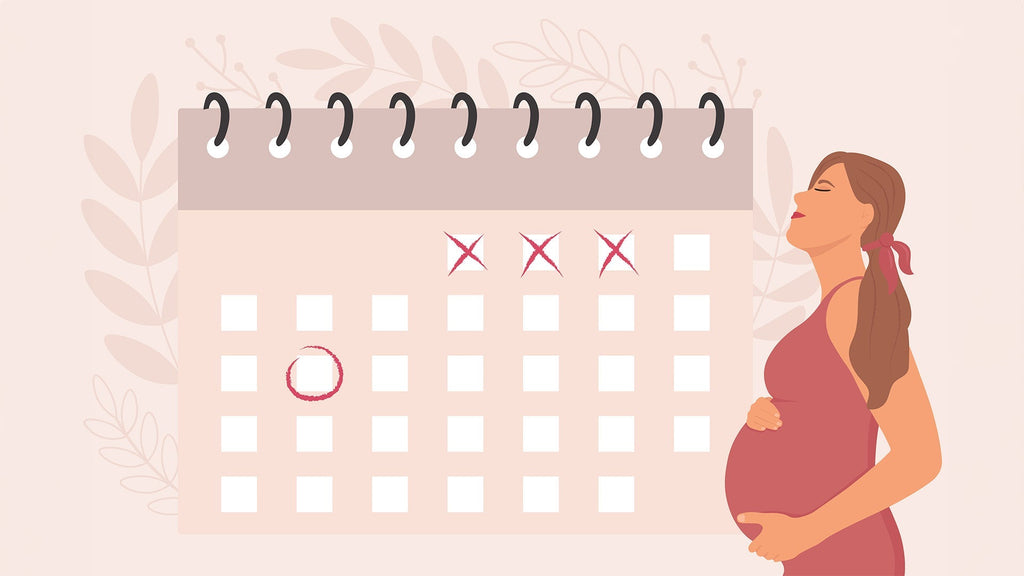
How to Use a Pregnancy Calculator to Track Your Pregnancy...
Finding out you're pregnant is such an exciting moment, full of joy—and, let’s face it, many questions! One of the first things you'll probably want to know is how far along you are and when your little one will make their grand entrance. That's where a pregnancy calculator comes in super handy. It's an easy-to-use tool that helps you track your pregnancy week by week so you can get a better sense of your journey. Let's break down how to use a pregnancy calculator and what you can expect as the weeks pass by!
What Is a Pregnancy Calculator?
A pregnancy calculator is a simple tool—whether digital or manual—that helps you estimate your due date and track your pregnancy progress. It works by using the first day of your last menstrual period (LMP) or the date of conception to calculate how many weeks pregnant you are. Since most pregnancies last about 40 weeks, the calculator gives you a general timeline of what to expect throughout your pregnancy.
The Baby Forest pregnancy calculator is a great way for expectant mothers to keep track of what's going on inside their bodies and how their babies are growing each week.
How to Use a Pregnancy Calculator
Using the Baby Forest pregnancy calculator is super easy! Here's a quick step-by-step guide to help you out:
Know your dates –
The most common method is entering the first day of your last menstrual period (LMP). If you know your exact conception date, that works, too, but LMP tends to be more reliable.
Enter the information –
Simply input the dates into the calculator. If you're using an app or website, it'll do the math for you in seconds!
Get your estimated due date –
The pregnancy calculator will give you an estimated due date (EDD), which is when your baby is most likely to arrive. Just remember, only about 5% of babies are born exactly on their due date.
Track your pregnancy week by week –
The calculator will also show how far along you are and what changes to expect in both your body and your baby’s development.
That's it! With just a couple of clicks, you'll have an estimated timeline for your pregnancy journey.
Pregnancy Week-by-Week Tracking with a Calculator
One of the most exciting parts of pregnancy is watching your baby grow. A pregnancy calculator allows you to follow along week by week. Here's what you can expect:
- Weeks 1-4: Your baby is still a tiny bundle of cells, and implantation is happening. You might not even realize you're pregnant yet!
- Weeks 5-8: Major organs begin to develop, and you may start experiencing morning sickness and fatigue.
- Weeks 9-12: Your baby is about the size of a plum, and you might be able to hear the heartbeat at a doctor's visit.
- Weeks 13-16: Hello, second trimester! Your energy levels might return, and your baby is growing rapidly.
- Weeks 17-20: You may feel your baby's first kicks! An anatomy scan around week 20 gives a detailed look at their development.
- Weeks 21-24: Your baby is developing a sleep cycle, and their tiny features are becoming more defined.
- Weeks 25-28: The third trimester begins! Your baby is practicing breathing, and you might notice stronger movements.
- Weeks 29-32: Your baby is gaining weight fast, and you may start experiencing Braxton Hicks contractions.
- Weeks 33-36: Your baby is getting into position for birth, and you might feel more discomfort as your belly grows.
- Weeks 37-40: Almost there! Your baby is fully developed and could arrive anytime now.
A pregnancy calculator makes tracking these changes fun and informative, giving you a better idea of what's happening inside your body each week.
Additional Features: Some Pregnancy Calculators Offer
While basic pregnancy calculators give you an estimated due date and current week, some advanced calculators and apps offer additional features:
- Weight gain tracker: Helps you monitor healthy pregnancy weight gain.
- Baby size comparison: Tells you what fruit or vegetable your baby's size compares to each week.
- Symptom guide: Offers insights on common pregnancy symptoms based on your current week.
- Kick counter: Helps you track baby movements in the third trimester.
- Contraction timer: Useful for timing contractions as labour approaches.
These extra features can make pregnancy tracking more interactive and informative, helping you stay prepared every step of the way.
Benefits of Using a Pregnancy Calculator
There are so many reasons why a pregnancy calculator is a great tool for expectant parents:
- Easy tracking – It makes tracking your pregnancy a breeze, so you don't have to worry about complicated calculations.
- Better health monitoring – It keeps you aware of important pregnancy milestones and when to schedule check-ups.
- Emotional connection – Watching your baby grow week by week makes the whole experience feel more real and exciting!
- Reduces anxiety – Understanding what's normal each week helps ease your worries and boosts your confidence throughout your pregnancy journey.
When to Consult a Doctor for More Accurate Pregnancy Tracking
While pregnancy calculators are super helpful, they aren't a substitute for professional medical advice. You should reach out to your doctor if:
- You have irregular periods, which can make it tricky to calculate your due date accurately.
- You're unsure of your last menstrual period (LMP) or conception date.
- You have a history of pregnancy complications and need closer monitoring.
- Your doctor suggests an ultrasound for more precise dating.
Ultrasound scans, usually done around 8-12 weeks, provide the most accurate estimate of your baby's age and due date. Your doctor can also offer guidance on prenatal care and nutrition and address any concerns you may have along the way.
Conclusion
A pregnancy calculator is a simple yet powerful tool that helps you track your pregnancy week by week. It gives you a sneak peek into your baby's growth, helps you plan ahead, and adds a little extra excitement to your journey to parenthood. While it's a great starting point, always consult your doctor for the most accurate tracking and personalized advice.
Pregnancy is such a beautiful experience, with something new happening every week. Whether it's hearing your baby's first heartbeat, feeling that tiny kick, or preparing for delivery, a pregnancy calculator helps you stay informed and connected to your little one. So, go ahead—enter your details and start tracking this incredible journey!

How to Track Your Pregnancy Weight Gain with a Calculator
Pregnancy is such an exciting and beautiful journey, isn't it? There are so many changes happening, some that you can see coming and others that might take you by surprise. One of the biggest changes is how your body transforms – especially when it comes to weight gain.
It's totally normal but tracking it can help you stay on top of things and ensure you're on the right track. The good news is, it doesn't have to be stressful! With a pregnancy weight gain calculator, you can easily keep an eye on your progress and feel confident that everything is going as it should.
Why Pregnancy Weight Gain Matters
You might be asking yourself, "Why should I track my weight gain during pregnancy?" Well, it's not just about the number on the scale. It’s really about making sure your body is doing what it needs to support both your health and your growing baby.
Gaining the right amount of weight is key because it helps provide the energy and nutrients your baby needs to grow – like building the placenta and increasing blood volume. Plus, it ensures you have the right reserves for labor and recovery, so you're ready for the big day! It’s all about giving your baby the best start and taking care of yourself, too.
What Is a Pregnancy Weight Gain Calculator?
A pregnancy weight gain calculator is a super helpful tool to keep track of your weight during pregnancy. It looks at a few key things, like your pre-pregnancy weight, your body mass index (BMI), and how far along you are in your pregnancy.
That information gives you guidelines on how much weight you should gain during each trimester. The goal isn't to hit a specific number exactly but to stay within a healthy range that's just right for you and your baby. It's all about making sure you're on the right track without stressing over the details!
How to Use a Pregnancy Weight Gain Calculator
Using a Baby Forest pregnancy weight gain calculator is pretty simple – just enter a few details, and you're good to go! Here's a quick guide to walk you through it:
1. Enter Your Pre-Pregnancy Weight: The calculator will use this to figure out your BMI and set a baseline for how much weight you should gain.
2. Provide Your Height: This helps calculate your BMI more accurately and gives you a better idea of your healthy weight range.
3. Input Your Current Week of Pregnancy: The calculator adjusts for each trimester, so it'll give you a tailored suggestion based on where you are in your pregnancy.
Once you've entered this info, the calculator will show you a suggested weight gain range. For example, if your BMI is in the normal range, it might suggest gaining between 25-35 pounds. But keep in mind, this can vary depending on things like whether you're carrying twins or if you were overweight before pregnancy.
How Much Weight Should You Gain During Pregnancy?
The amount of weight you should gain during pregnancy really depends on a few factors, especially your starting weight. Here are some general guidelines to give you an idea:
- Underweight (BMI less than 18.5): If you were underweight before pregnancy, you might need to gain between 28 and 40 pounds.
- Healthy weight (BMI between 18.5 and 24.9): For those with a healthy weight, the recommended range is usually 25 to 35 pounds.
- Overweight (BMI between 25 and 29.9): If you were overweight before pregnancy, you might be advised to gain 15 to 25 pounds.
- Obese (BMI over 30): For those who were obese before pregnancy, a weight gain of 11 to 20 pounds might be recommended.
Remember, these are just general guidelines. Every pregnancy differs, and your doctor or healthcare provider will give you the best advice based on your unique health and circumstances.
Factors That Affect Pregnancy Weight Gain
It's important to remember that pregnancy weight gain isn't about sticking to a strict number from a calculator. Several things can influence how much weight you'll gain, including:
- Multiple Pregnancies: If you're carrying twins or multiples, you may need to gain more weight to support their growth and development.
- Activity Level: How active you were before and during pregnancy can affect how much weight you gain. Generally, staying active helps maintain a healthy weight, but it's important to balance activity with rest.
- Diet and Nutrition: A well-rounded, nutritious diet is key. Eating lots of fruits, veggies, lean proteins, and whole grains helps promote healthy weight gain for both you and your baby.
- Morning Sickness: Nausea and vomiting, especially in the first trimester, can make it hard to eat enough, which can affect weight gain.
- Health Conditions: If you have health conditions like gestational diabetes or thyroid disorders, they can influence weight gain and may require closer monitoring from your healthcare provider.
It’s all about balance, so focus on the bigger picture and work closely with your doctor to make sure everything stays on track.
Tips for Maintaining a Healthy Pregnancy Weight
Maintaining a healthy pregnancy weight doesn’t mean stressing over every pound. It's about being mindful and focusing on your overall well-being. Here are a few tips to help:
1. Eat Balanced Meals: Choose nutrient-rich foods like leafy greens, lean meats, and whole grains to nourish your body and baby.
2. Stay Hydrated: Drinking enough water is crucial for both you and your baby's health. Aim for at least 8-10 cups a day.
3. Listen to Your Body: It's normal to feel hungrier during pregnancy but try to focus on satisfying hunger with healthy foods rather than overeating.
4. Stay Active: Gentle exercises like walking, swimming, or prenatal yoga can help you stay healthy and feel great during pregnancy. Always check with your doctor before starting any exercise regimen.
5. Get Plenty of Rest: Adequate sleep helps your body recover and maintain energy levels, which can also contribute to maintaining a healthy weight.
When to Consult a Doctor About Pregnancy Weight Gain
If you notice a sudden increase or decrease in weight, it's important to reach out to your healthcare provider. Rapid weight gain, especially in the second or third trimester, could be a sign of conditions like pre-eclampsia, which requires attention.
On the flip side, not gaining enough weight might mean your baby isn't getting the nutrition they need, which is also something to address. Your doctor is the best person to offer guidance and ensure everything is progressing smoothly for both you and your little one. So, if anything feels off, don't hesitate to ask for help.
Conclusion
Tracking your pregnancy weight gain doesn't need to be a stressful experience. With the help of a pregnancy weight gain calculator, you can stay informed about your health and ensure you're supporting both yourself and your baby in the best possible way.
Just remember, every pregnancy is unique, so don't stress over the numbers – focus on eating well, staying active, and listening to your body. With the right approach, you can embrace this exciting time with confidence, knowing you're doing what's best for you and your growing little one.
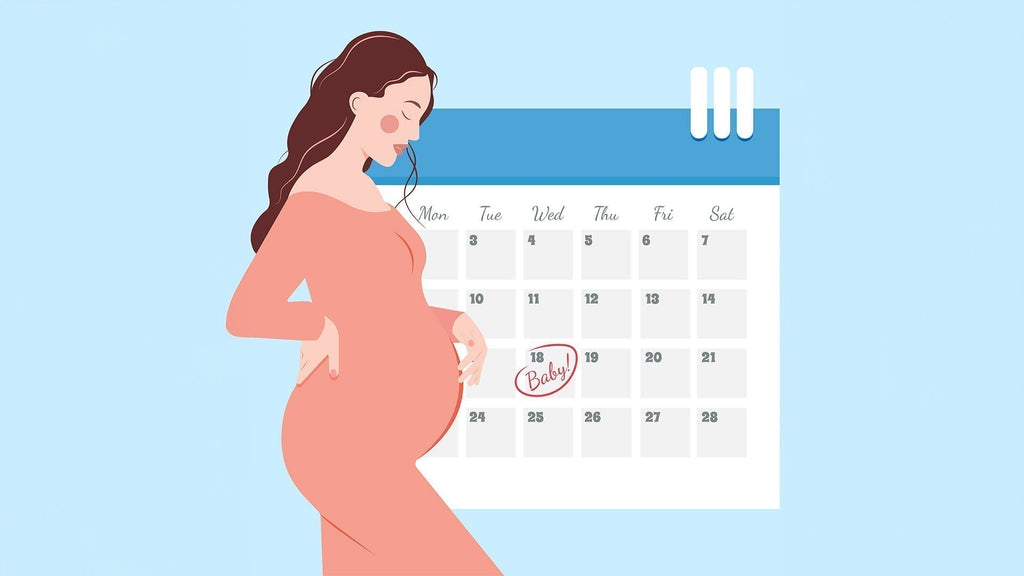
How to Use a Due Date Calculator: A Step-by-Step Guide
Pregnancy is such an exciting time—full of joy, surprises, and, yes, a few uncertainties along the way. One of the most common questions parents-to-be have is, "When will our baby arrive?" Knowing your due date is super important because it helps you plan for the big day. Luckily, thanks to due date calculators, figuring this out doesn't have to be complicated! In this guide, we'll show you exactly how to use one and help you understand your pregnancy timeline so you can feel a little more prepared for what's ahead.
What Is a Due Date Calculator?
A due date calculator is a handy tool that helps estimate when your little one might make their grand entrance. It works by using the first day of your last menstrual period (LMP) or your conception date, along with a formula that assumes a standard 28-day cycle. Keep in mind that it's not an exact science—your baby could arrive earlier or later than the estimate. But don't stress! The calculator gives you a solid starting point so you can start preparing for the big day.
Step-by-Step Guide to Using a Due Date Calculator
The Baby Forest Due Date Calculator can be incredibly helpful. Here’s how:
1. Know the Date of Your Last Period: First things first, you'll need to know the first day of your last menstrual period (LMP). This is usually how doctors estimate your due date. If you're not sure about your LMP, that's okay—just take your best guess, and the calculator can still give you a rough idea.
2. Enter the Information: Once you've got the date, simply plug it into a due date calculator. There are plenty of websites and apps that offer this feature, so you'll find one easily. Some calculators may also ask about the length of your menstrual cycle if it's different from the typical 28 days.
3. Hit Calculate: After entering all the details, hit the "Calculate" button. And just like that, you'll have an estimated due date!
4. Adjust for Cycle Length: If your cycle is longer or shorter than 28 days, the calculator will adjust your due date to reflect that. If you're using an app, it'll guide you through this step, so you don't have to worry about the details.
5. Stay Relaxed About the Result: Once the calculator gives you your due date, just remember—it's an estimate! Babies like to arrive on their own time, and most first-time pregnancies last between 38 and 42 weeks. So, don't stress if your little one comes a little earlier or later than expected.
How Accurate Is a Due Date Calculator?
While due date calculators are super helpful, they aren't perfect. The accuracy can depend on things like how regular your menstrual cycle is, how accurate the data you provide is, and when you ovulate. In fact, only about 5% of babies are born on their exact due date, so it's important not to get too attached to the date the calculator gives you.
These calculators typically assume you ovulate on day 14 of a standard 28-day cycle, but not everyone follows this pattern. If your cycle is shorter or longer than 28 days, the calculator will adjust your due date accordingly, but even then, it's still just an estimate. So, while it's a great tool, remember that your baby will arrive when they're ready!
Understanding Your Pregnancy Timeline Based on the Due Date
Once you have your due date, it's like a roadmap for your pregnancy journey. The typical 40 weeks are divided into three trimesters:
First Trimester (Weeks 1-12):
This is the very beginning, where your baby's organs are forming. You might feel super tired and even deal with morning sickness. It's not always the easiest, but it's a crucial time for your baby's growth.
Second Trimester (Weeks 13-26):
This is often referred to as the "honeymoon phase." You'll probably have more energy, and you may even start showing! Your baby's features will become more defined, and this is when many parents start to really feel that connection with their little ones.
Third Trimester (Weeks 27-40):
The final stretch! Your baby's organs are maturing, and they're getting ready for birth. As your baby grows, you might feel more uncomfortable, but hang in there—it won't be long until you meet your little one!
Knowing your due date makes it easier to track milestones and plan ahead for things like medical appointments, buying baby essentials, and getting your home ready for your new arrival. It helps you stay organized and calm so you're prepared when the big day finally arrives!
What to Do If Your Due Date Changes
Sometimes, your doctor might adjust your due date based on an ultrasound or other measurements. This usually happens if your baby's growth doesn't quite match the initial estimate. It's especially common if you're not sure about your LMP or if your cycles are irregular.
If your due date changes, don't stress! It doesn't mean anything is wrong—it just means you've got a more accurate idea of when your baby might arrive. Babies grow at their own pace, and doctors use these updates to make sure everything's on track. It's all part of the process, so take a deep breath and enjoy the journey!
When to Visit a Doctor for a More Accurate Due Date Estimate
If you're unsure about the details needed for your due date calculation or if your cycle is irregular, it's a great idea to check in with your doctor. They can help you get a more precise estimate, often using ultrasounds, which are a reliable way to date a pregnancy. Early ultrasounds, especially those done within the first 12 weeks, are particularly accurate when it comes to figuring out how far along you are.
Doctors can also keep an eye on your baby’s growth and adjust your due date if needed. So, if you're feeling uncertain or just want a clearer picture of your pregnancy timeline, don't hesitate to reach out to your doctor for some peace of mind. They're there to help guide you through every step of this exciting journey!
Conclusion
A due date calculator is a super handy tool that helps give you an idea of when your baby might make their debut. While it's not a guarantee, it's a great starting point for planning and preparing for your new arrival. Just keep in mind that babies don't always follow the schedule, so it's important to stay flexible and go with the flow.
Now that you know how to use a due date calculator, you can track your pregnancy journey with more confidence. It's an exciting time filled with growth and anticipation, so embrace each moment as you get ready to meet your little one. Your baby's arrival will be worth the wait!
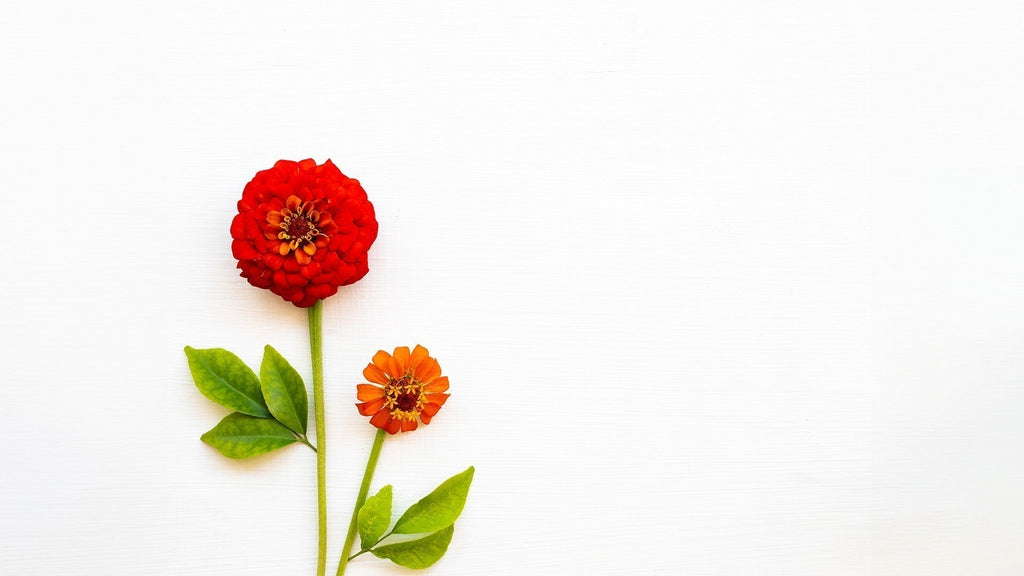
What Is a Birth Flower? Find the Perfect Flower for Your ...
Discover the meaning behind birth flowers and find the perfect bloom for your birth month. Learn how each flower symbolizes personality, traits, and more.
Becoming a parent is an exciting journey, full of sweet surprises and little discoveries. One charming tradition you might love is the idea of birth flowers. Like birthstones, these are unique flowers linked to each month of the year, each carrying its unique meaning. They're perfect for thoughtful gifts or adding a meaningful touch to your home decor. Let's explore what birth flowers are all about, why they're so special, and how you can bring their beauty into your life.
What Is a Birth Flower?
A birth flower is simply a flower that represents the month you were born. Like birthstones or astrological signs, these blooms are nature's symbolic gift for each month. Each one has its special meaning, making it a lovely way to celebrate someone's unique personality, milestones, or even the arrival of a new family member.
The tradition of birth flowers goes back centuries, with ties to different cultures worldwide. They're a timeless, heartwarming way to connect with nature and honour life's important moments.
Birth Flowers by Month and Their Meanings
Here's a fun little guide to birth flowers for each month and the beautiful meanings they carry:
January – Carnation & Snowdrop:
Carnations symbolize love and admiration, while snowdrops represent hope and fresh beginnings.
February – Violet & Primrose:
Violets represent loyalty and faithfulness, while primroses represent young love.
March – Daffodil:
These bright yellow blooms represent rebirth and new beginnings.
April – Daisy & Sweet Pea:
Daisies symbolize purity and innocence, while sweet peas represent blissful pleasure.
May – Lily of the Valley & Hawthorn:
Lilies of the valley stand for sweetness and humility, while hawthorn blooms symbolize hope.
June – Rose & Honeysuckle:
Roses are classic symbols of love, and honeysuckles represent strong bonds.
July – Larkspur & Water Lily:
Larkspur symbolizes positivity and dignity, while water lilies represent peace and enlightenment.
August – Gladiolus & Poppy:
Gladiolus stands for strength and integrity, and poppies symbolize remembrance.
September – Aster Morning Glory:
Asters represent wisdom and love, while morning glories symbolize affection.
October – Marigold Cosmos:
Marigolds are linked to warmth and creativity, and the cosmos represents harmony.
November – Chrysanthemum:
These blooms symbolize friendship, joy, and optimism.
December – Narcissus & Holly:
Narcissus represents hope and good wishes, while Holly symbolizes protection and domestic happiness.
How to Use Birth Flowers in Gifting and Decor
Birth flowers can bring a special touch to so many parts of life. Here are some fun and meaningful ways to incorporate them:
Gifts for New Parents:
Surprise new parents with a bouquet featuring the baby's birth flower—a thoughtful and personal gesture.
Related Article: 5 Mindful Gift Ideas for New Parents
Baby Showers:
Use birth flowers in table centrepieces or floral decorations to create a charming and memorable baby shower theme.
Related Article: How to Plan the Perfect Baby Shower?
Nursery Decor:
Personalize your baby's room with wall art or prints featuring their birth flower.
Personal Keepsakes:
Think of pressed flower frames, jewellery, or custom artwork featuring your little one's birth flower.
Family Traditions:
Start a garden filled with birth flowers for each family member—a living, blooming family history right in your backyard!
Cultural and Historical Significance of Birth Flowers
Birth flowers have fascinating cultural and historical roots. Back in Victorian times, flowers were a way to communicate unspoken messages through "floriography,” or the language of flowers. Imagine expressing love, friendship, or even secret feelings simply through blooms!
Different cultures also attach their meanings to flowers. For example, in Japanese culture, cherry blossoms symbolize the fleeting beauty of life—reminding us to cherish every moment.
Different cultures also attach their meanings to flowers. For example, in Japanese culture, cherry blossoms symbolize the fleeting beauty of life—reminding us to cherish every moment.
How to Care for Your Birth Flower
If you've got a garden—or even just a few pots on your balcony—growing your birth flower can be a rewarding experience. Here are some simple care tips to help you get started:
Know Your Bloom's Needs:
Check whether your birth flower prefers soaking up the sun or hanging out in the shade.
Water Wisely:
Most flowers love well-drained soil, so ensure their roots aren't in water.
Fertilize Occasionally:
Boost your plant's health with organic fertiliser occasionally.
Prune Regularly:
Deadhead those spent blooms to keep your plant vibrant and encourage new growth.
Protect from Pests:
Look for pests and try natural solutions to keep them at bay. And if gardening isn't your thing, that's okay! Simply enjoying fresh or dried versions of your birth flower can still brighten your space and bring a touch of meaning to your day.
Conclusion
Birth flowers are a lovely way to add a personal and meaningful touch to life’s special moments. Whether you're gifting a thoughtful bouquet, decorating your home with floral art, or starting a new family tradition, these beautiful blooms carry heartfelt messages of love, hope, and joy.
As you navigate the adventure of parenthood, finding small ways to celebrate and connect with nature can make the journey even more magical. Why not discover your family's birth flowers and let them bloom in your life—whether in your garden, on your walls, or simply in your heart?
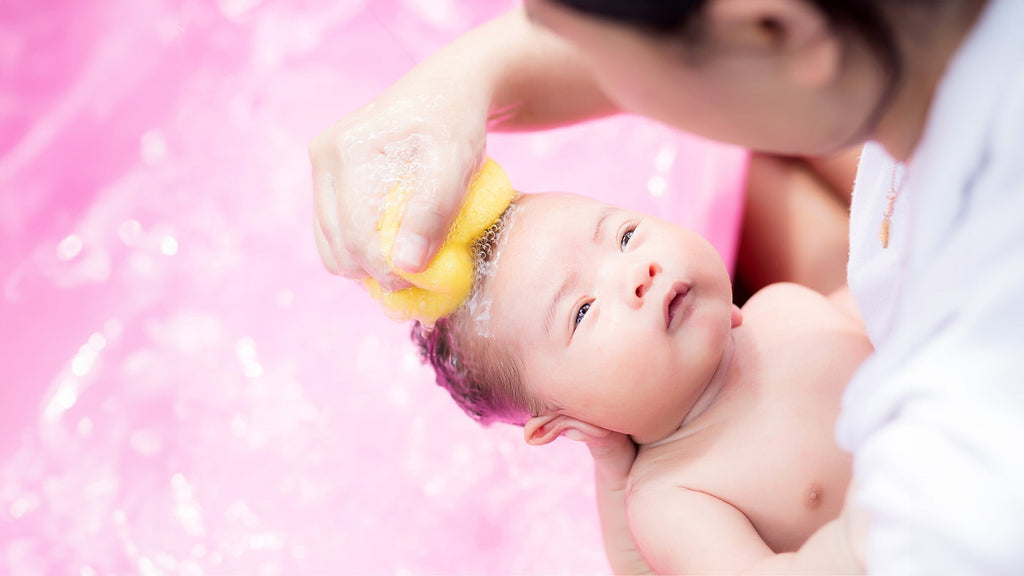
How to Give a Safe and Gentle Sponge Bath to Your Baby
A simple guide for new parents on giving a baby a sponge bath. Learn the right techniques and what supplies you'll need. Start with confidence!
Bringing your newborn home is such a special moment, but let’s be real—it also comes with a lot of “Wait, am I doing this right?” moments. One of those? Keeping your little one clean. Since newborn skin is super delicate and the umbilical cord stump needs time to heal, a full bath isn’t the best idea just yet. That’s where a gentle sponge bath procedure comes in!
If you’re feeling a little unsure, don’t worry—you’re not alone. Giving your baby a sponge bath is easier than you think, and we’ve got all the tips to help you do it safely and comfortably.
When Does a Baby Need a Sponge Bath?
Newborns don’t need a bath every day—in fact, too much bathing can dry out their delicate skin. That’s why a sponge bath procedure is the way to go until the umbilical cord stump naturally falls off (which usually happens within two weeks). If your baby has been circumcised, sponge baths are also the safest option since they help keep the healing area clean and dry.
Of course, babies have a knack for making adorable messes—whether it’s a milk spill, a diaper blowout, or just an extra sweaty nap. In those cases, a quick sponge bath is a lifesaver for freshening them up without a full soak.
Essential Supplies for a Baby Sponge Bath
Before you start, gather everything you’ll need. Babies can get cold quickly, so having everything within reach ensures a smooth process.
Here’s what you’ll need:
- A soft washcloth or natural sponge
- A basin of warm water (not too hot—around 98°F or 37°C is ideal)
- Gentle, fragrance-free baby soap (optional)
- A clean, soft towel
- A fresh diaper and clean clothes
- Cotton balls or pads (for cleaning the eyes and face)
Once you have all the essentials ready, it’s time to start the sponge bath procedure step by step.
Related Read - Ultimate Baby Bathing Checklist
Step-by-Step Guide to Giving a Sponge Bath
1. Choose a Warm, Comfortable Spot
Pick a safe, warm place for the bath, like a changing table, a padded surface, or even a bed with a waterproof mat underneath. Keep the room temperature cozy (around 75°F) to prevent your baby from getting chilly.
2. Undress Your Baby, but Keep Them Wrapped
Babies can feel exposed and cold quickly, so keep them wrapped in a soft towel and uncover only the parts you’re washing.
3. Start with the Face
Dip a cotton ball in warm water (no soap needed) and gently wipe each eye from the inner to the outer corner. Use a fresh cotton ball for each eye. Then, use a soft washcloth to clean the rest of the face, paying attention to the folds around the nose and mouth.
4. Wash the Neck, Hands, and Arms
Gently wipe around the neck, behind the ears, and under the chin where milk tends to collect. Move on to the hands and arms, carefully cleaning between tiny fingers.
5. Clean the Chest and Back
Using a damp, warm washcloth with a tiny amount of baby soap (if needed), wipe down the chest and back. Avoid scrubbing—gentle strokes are enough.
6. Wipe the Legs and Feet
Babies love to kick, so their legs and feet can get surprisingly dirty. Clean between the toes and make sure to dry them well.
7. Clean the Diaper Area Last
Always wash the diaper area last to avoid spreading bacteria. For girls, wipe front to back. For boys, gently clean the genital area without pulling back the foreskin (if uncircumcised).
8. Dry and Dress Your Baby
Pat your baby dry immediately with a soft towel, making sure to dry any skin folds. Then, dress them in a clean diaper and warm, comfy clothes.
Tips for Keeping Your Baby Comfortable During a Sponge Bath
- Keep talking to them! Your voice soothes your baby and makes bath time feel safe and familiar.
- Use gentle strokes. No need to scrub—soft dabs and wipes are all it takes.
- Keep baths short. 5 to 10 minutes is plenty.
- Warm the towel beforehand. A pre-warmed towel makes drying time extra cozy.
- Moisturize if needed. If your baby has dry skin, use a natural, fragrance-free baby lotion after the bath.
Common Mistakes to Avoid
- Using too much soap. A little goes a long way! Too much can dry out your baby’s skin.
- Letting the baby get too cold. Always keep them wrapped and only expose the part you’re washing.
- Skipping the skin folds. Milk, sweat, and lint can hide in the folds of the neck, thighs, and armpits.
- Rushing the process. Take your time. Making bath time calm and soothing can turn it into a bonding moment.
Related Read - Baby's First Bath: A Step-by-Step Skincare Guide for Newborns
When to Transition to a Regular Bath
Once your baby’s umbilical cord stump has fallen off and any circumcision has healed, it’s time to move on to a real bath! This usually happens around two to three weeks after birth. When that moment comes, stick to the same gentle approach—warm water, soft strokes, and keeping bath time short and sweet.
Conclusion
Giving your newborn a sponge bath procedure doesn’t have to be stressful. In fact, it’s a beautiful chance to bond with your little one. Just keep things warm, be extra gentle, and enjoy these snuggly, peaceful moments. Before you know it, your tiny newborn will be splashing around in the tub, so soak up every second while they’re this little!
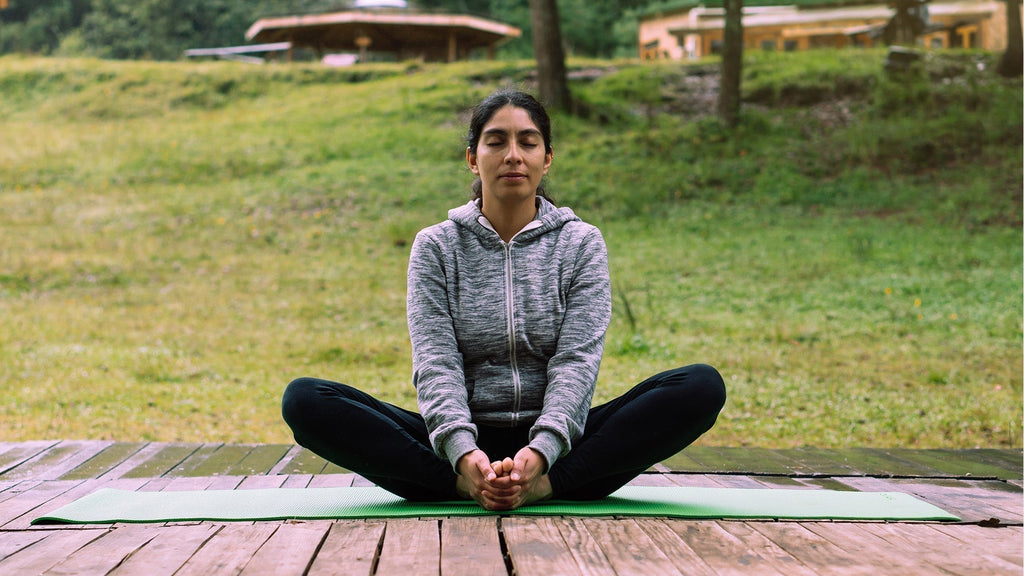
Fertility Yoga for Beginners: A Step-by-Step Guide
Trying to conceive can be an emotional rollercoaster. The waiting, the stress, the well-meaning (but sometimes overwhelming) advice—it's a lot. If you're looking for a natural way to support your fertility and bring some calm into the process, fertility yoga might be just what you need. It's a gentle, mindful practice that helps melt away stress, improves blood flow to your reproductive organs, and brings a sense of balance to your body and mind.
The best part? You don't need to be a yoga pro to start. Yoga for conceiving is all about simple, nurturing movements that make you feel good—physically and emotionally. This guide will walk you through the basics so you can step onto your mat with confidence and start your journey with ease.
How Yoga Supports Fertility
You might be wondering—how exactly does yoga help with fertility? The benefits go beyond just stretching and relaxation.
Reduces Stress:
Stress is a big factor in fertility struggles. Yoga helps calm the nervous system, reducing cortisol levels and promoting a state of relaxation that's essential for conception.
Improves Blood Circulation:
Certain poses enhance blood flow to the reproductive organs, helping to nourish and support them.
Balances Hormones:
By stimulating the endocrine system, yoga can help regulate hormones crucial for ovulation and overall reproductive health.
Strengthens the Pelvic Area:
Many yoga poses target the hips, pelvis, and lower abdomen, creating a strong and supportive foundation for pregnancy.
Encourages Mind-Body Connection:
Yoga teaches you to be more in tune with your body, making it easier to recognize your natural cycles and fertility signals.
Best Time to Start Fertility Yoga
The short answer? Anytime! There's no right or wrong time to start, but if you're actively trying to conceive, incorporating yoga for conceiving into your routine before ovulation can be extra beneficial.
If you're undergoing fertility treatments, it's always a good idea to check with your doctor about when and how to practice. Some women find that gentle yoga works well throughout their entire cycle, while others prefer to adjust the intensity based on how they're feeling. Listen to your body, take it slow, and let yoga support you every step of the way!
Related Read - About Beej Sanskar
Essential Tips for Beginners
Starting something new can feel intimidating, but don't worry. Here are a few tips to ease into fertility yoga:
Keep It Gentle:
Fertility yoga is all about relaxation and connection. Avoid intense, high-impact yoga styles.
Breathe Deeply
Focus on slow, deep breaths. This helps reduce stress and increases oxygen flow to your reproductive organs.
Listen to Your Body:
If a pose feels uncomfortable, skip it. Yoga should feel good, not forceful.
Create a Calm Space:
Find a quiet spot where you feel at ease. A soft mat, dim lighting, and relaxing music can set the mood.
Stay Consistent:
Like anything, consistency matters. Aim for at least 3-4 sessions a week to see benefits.
Step-by-Step Fertility Yoga Routine
Here's a simple routine to get you started. These poses are gentle, effective, and beginner-friendly.
1. Butterfly Pose (Baddha Konasana)
-
Sit on the floor with your spine tall.
-
Bring the soles of your feet together, letting your knees drop outward.
-
Hold your feet and gently press your knees toward the floor.
-
Stay here for 3-5 minutes, breathing deeply.
Why it helps: It opens up the hips and increases circulation to the pelvic area.
2. Legs Up the Wall (Viparita Karani)
-
Lie on your back and extend your legs up against a wall.
-
Relax your arms by your sides and breathe deeply.
-
Hold for 5-10 minutes.
Why it helps: Encourages blood flow to the reproductive organs and promotes relaxation.
3. Child's Pose (Balasana)
-
Kneel on the floor and sit back on your heels.
-
Extend your arms forward and rest your forehead on the mat.
-
Breathe deeply and stay here for 3 minutes.
Why it helps: It releases tension in the lower back and hips and reduces stress.
4. Bridge Pose (Setu Bandhasana)
-
Lie on your back with your knees bent and feet flat on the floor.
-
Press your feet into the mat and lift your hips up.
-
Hold for 30 seconds, then lower slowly.
Why it helps: Stimulates the pelvic region and balances hormones.
5. Seated Forward Bend (Paschimottanasana)
-
Sit with legs extended forward.
-
Reach for your toes, folding over your legs.
-
Hold for 3 minutes while breathing deeply.
Why it helps: It improves blood circulation to the uterus and relieves stress.
Additional Lifestyle Tips to Boost Fertility
Along with yoga for conceiving, a few lifestyle changes can further support your journey:
Eat a Balanced Diet:
Focus on whole, nutrient-rich foods like leafy greens, nuts, seeds, and lean proteins.
Stay Hydrated:
Proper hydration supports overall reproductive health.
Get Enough Sleep:
Aim for 7-9 hours of quality sleep to keep hormones balanced.
Reduce Caffeine and Alcohol:
Both can interfere with hormone regulation and ovulation.
Practice Mindfulness:
Meditation and breathing exercises can further reduce stress and improve emotional well-being.
Precautions and When to Consult a Doctor
Fertility yoga is generally safe, but tuning into your body is key. If you have a medical condition, have had recent surgery, or are undergoing fertility treatments, it's always best to check with your doctor before starting.
And remember—yoga for conceiving should feel good, not painful. If any pose feels uncomfortable or causes strain, don't push through it. Modify, take a break, or switch to a gentler pose. Your body knows best, so let it guide you!
Conclusion
Fertility yoga is more than just movement—it's a way to nurture your body, mind, and fertility all at once. It melts away stress, boosts blood flow to your reproductive organs, and creates a positive, welcoming space for new life to grow.
By making yoga for conceiving a part of your routine—alongside a healthy lifestyle—you're giving yourself the best possible chance to embrace this beautiful journey. So, roll out your mat, take a deep breath, and trust the process. Your body is working with you every step of the way!
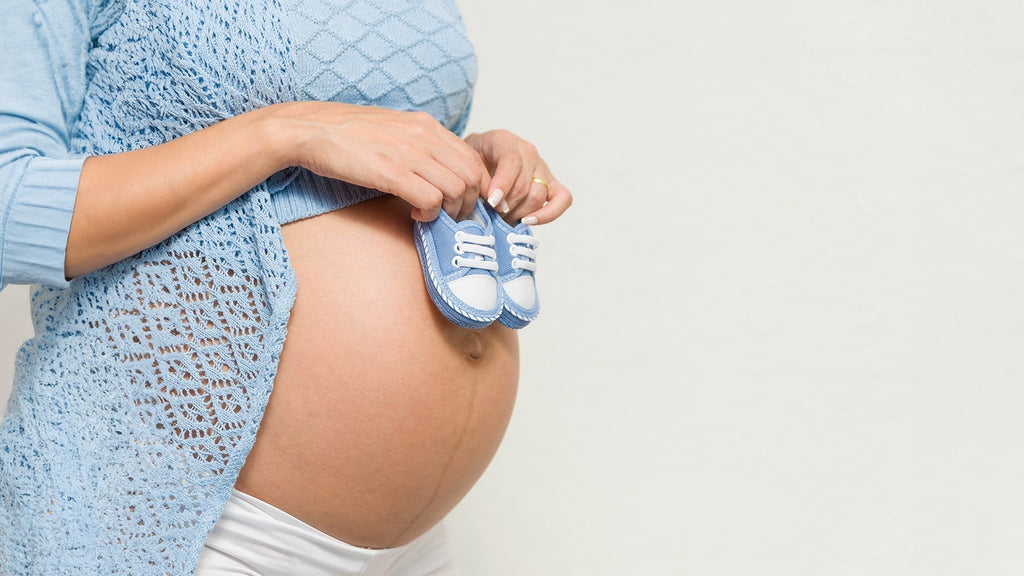
Gas Bubbles or Baby Kicks? How to Tell the Difference Dur...
Pregnancy is full of surprises! One moment, your belly feels quiet, and the next—there's a weird little flutter. Could it be your baby moving, or is it just gas? Every first-time mom wonders the same thing!
The early flutters of pregnancy can feel surprisingly similar to digestion-related movements, making it tricky to tell what's what. But don't worry—understanding the difference between gas bubbles and baby moving will help you connect with your little one and recognize key pregnancy milestones.
Let's break it down in a simple, no-stress way!
Understanding Quickening: The First Baby Movements
Quickening is that magical moment when you first feel your baby move—an exciting milestone that usually happens between 16 and 25 weeks of pregnancy. But here's the tricky part: those first little flutters can be super subtle and easy to mistake for something else.
At first, baby kicks might feel like tiny bubbles popping, a soft tickle, or even little muscle spasms. Some moms say it's like butterflies in their belly! But don’t worry—soon enough, those movements will get stronger and more distinct, making it much easier to tell when your little one is saying hello.
Related Read - When Can You Feel Your Baby Kick?
What Do Gas Bubbles Feel Like
Gas bubbles are totally normal during pregnancy (thanks, hormones!). Since digestion slows down, trapped air can create sensations that feel surprisingly like baby kicks. You might notice:
-
A rolling or gurgling feeling in your stomach
-
Quick, popping sensations that come and go
-
Pressure that shifts and disappears after passing gas
The key difference? Gas is often paired with bloating or bowel changes, while baby kicks become more rhythmic and responsive over time. If you’re unsure, try eating, resting, or gently poking your belly—your little one might just say hello!
Key Differences Between Gas Bubbles and Baby Kicks
So, how do you tell if it's gas or your baby making moves? Let's break it down!
Location Matters
Baby kicks usually happen lower in your belly, right where your uterus is growing. Gas bubbles can pop up anywhere in your stomach or intestines.
Pattern and Timing
Gas comes and goes randomly, often after meals. Baby movements tend to follow a pattern, especially as they get stronger over time.
Response to Touch
Try pressing gently on your belly—if you feel movement in response, it's likely your baby is saying hello! Gas won't react the same way.
Accompanying Symptoms
Feeling bloated, crampy, or the urge to pass gas? That's digestion, not your baby.
Consistency
Baby kicks become more predictable as pregnancy progresses, while gas is just... unpredictable.
Understanding the difference between gas bubbles and baby moving helps you relax and enjoy this special part of pregnancy!
When to Expect Baby Kicks
If you're a first-time mom, you'll probably start feeling those tiny kicks between 18-25 weeks. If you've been pregnant before, you might recognize them even earlier—sometimes around 16 weeks! But don't stress if you don't feel movement right away.
Things like placenta placement, baby's position, and even body shape can all affect when you first notice those little flutters. As your pregnancy moves along, those movements become stronger and more obvious. By the third trimester, get ready for jabs, rolls, and even little baby hiccups—it's all part of the magic!
How to Encourage Baby Kicks
Eager to feel those tiny feet in action? Try these fun little tricks to get your baby moving!
Grab a snack
A little fruit or juice can give your baby a mini sugar rush, making them more active.
Lie down and relax
Babies love to move when you're still, so try lying on your side and pay close attention.
Give a gentle nudge
A soft belly rub, or poke might just get a response!
Play some tunes
Your baby can hear sounds in the womb, and some even "dance" (okay, wiggle) to music or your voice.
Change positions
Adjusting how you sit or lie down might encourage movement—like helping them find their favourite cozy spot!
Savor these little moments—before you know it, those tiny flutters will turn into big, undeniable kicks!
When to Talk to Your Doctor
At first, baby movements can be all over the place, but by the third trimester, you'll start noticing a pattern. If you ever feel unsure, trust your instincts!
Call your doctor if:
-
You haven't felt any movement for 25 weeks.
-
Your baby's movements suddenly slow down or stop.
-
There's a significant decrease in activity after 28 weeks.
A quick check-up can bring peace of mind and make sure everything is going smoothly. When in doubt, reach out—it's always better to be safe!
Conclusion
Feeling movement inside your belly is pure magic! But in the early weeks, it's totally normal to wonder—is that a baby kick or just gas? The trick is to notice where you feel it, how often it happens, and if it responds to touch.
With time, you'll start recognizing your baby's little patterns and cherish these tiny moments of connection. Knowing the difference between gas bubbles and baby moving can ease worries and make pregnancy even more exciting. So, take a deep breath, trust your body, and enjoy this incredible journey!

How to Encourage Your Baby to Take Their First Steps
Watching your baby take their first steps is one of the most exciting moments as a parent. It's a memory you'll hold onto forever! But, as a new parent, you might ask yourself, when do babies start walking? Well, the timing can vary from baby to baby.
Knowing a bit about the typical development process and how to support your little one can help them confidently take those first steps. So, let's talk about how you can encourage your baby to walk and share some tips to make the journey smoother for both of you!
Understanding When Babies Typically Start Walking
Before we delve into the tips and tricks, let's answer a question many parents have: when do babies start walking? Generally, most babies take their first steps somewhere between 9 to 12 months. But here's the thing—some babies might walk earlier, while others take their time. It's all part of their unique development. Some little ones may even skip crawling entirely, while others might crawl for a few months before walking.
In the early months, your baby is busy learning to roll over, sit, and stand—these are all important building blocks for walking. As they approach their first birthday, you'll likely notice them more interested in standing and moving around. But hey, if your baby isn’t walking exactly on time, don't stress. They're doing just fine as long as they're hitting other milestones!
Signs Your Baby Is Ready to Start Walking
You might notice a few signs that indicate your baby is getting ready to take their first steps. Here are some common ones:
-
Pulling themselves up to stand:
If your baby is starting to pull themselves up on furniture or your legs, that's a great sign. It means they're building strength in their legs and core muscles. -
Cruising along furniture:
As your baby gains more confidence, they may begin to "cruise" or walk while holding onto furniture. This is a key step in the transition to walking independently. -
Standing for longer periods:
When your baby can stand without support, even for just a few seconds, it shows they're gaining balance and stability.
-
More interest in moving:
If your baby is eager to explore and tries to take steps while holding onto your hands, they are ready to start walking.
How to Encourage Your Baby to Walk
The best way to encourage your baby to walk is to create an environment where they can practice safely and comfortably. Here are some simple and effective ways to help them along the way:
-
Provide plenty of tummy time:
Tummy time is essential for building the muscles your baby needs to roll, crawl, and eventually walk. It helps strengthen their arms, shoulders, and neck, preparing them for more complex movements like standing and walking. -
Support them in standing:
Help your baby practice standing by holding their hands and guiding them to stand. Don't be afraid to let them bear some of their own weight, as this helps develop the leg muscles needed for walking. -
Encourage cruising:
Place toys or objects just out of reach on low furniture, encouraging your baby to cruise while holding onto the furniture. This helps them build balance and coordination. -
Create a safe walking space:
As your baby starts to take steps, make sure they have a safe environment to practice. Use soft rugs or mats and remove any sharp objects or obstacles that could cause accidents. -
Show them how it's done:
Babies love to imitate, so demonstrate walking by holding their hands and walking with them. You can also encourage them by showing excitement when they make even the smallest steps.
Building Physical Strength for Walking
To ensure your baby is physically ready for walking, focus on activities that help strengthen their muscles. Here are some simple ways to promote physical development:
-
Encourage crawling:
Crawling helps build core and arm strength, both essential for walking. If your baby isn’t crawling yet, give them plenty of floor time to encourage it. -
Use baby walkers (with caution):
While baby walkers can be fun, they aren't recommended for everyday use. They can limit the development of walking skills and might even cause safety issues. Instead, let your baby practice standing and walking with your guidance. -
Give them opportunities to climb:
If your baby is showing interest in climbing, encourage it in a safe, supervised way. Climbing helps improve coordination, strength, and balance.
Common Challenges and How to Address Them
As your baby begins to walk, they may face a few challenges. Here are some common ones and tips on how to address them:
-
Fear of falling:
It's completely normal for your baby to be hesitant about walking at first. To help, encourage them gently, and offer praise when they try. Support them without pushing too hard.
-
Wobbliness and falls:
Expect plenty of falls as your baby learns to balance. Ensure they are walking in a safe space, and don't worry too much about the occasional tumble—it's all part of the learning process. -
Delayed walking:
If your baby is taking longer to walk than you expected, try not to stress. Some babies take a little longer. As long as they are meeting other developmental milestones, they are likely just taking their time.
What to Avoid
While encouraging your baby to walk, it's essential to avoid certain practices that could hinder their progress:
-
Skipping crawling:
While some babies may skip crawling, it's an important stage in developing motor skills. Avoid pushing your baby to skip this step too early. -
Rushing the process:
Every baby develops at their own pace. Avoid comparing your baby to others. The most important thing is that they are happy, healthy, and progressing in their own way.
When to Consult a Doctor?
In most cases, there's really no need to worry if your baby isn't walking exactly on time. However, if your little one isn't showing any interest in standing or walking by 18 months, it might be a good idea to talk to your paediatrician. Sometimes, delayed walking can signal an underlying issue but remember—every baby develops at its own pace, so a little extra time is often just part of the process.
Conclusion
Encouraging your baby to take their first steps is such a rewarding experience—full of excitement and joy! So, when do babies start walking? The answer can vary, but with the right support and a little patience, your baby will eventually take those first wobbly steps. The key is to create a safe, supportive environment and allow your baby to explore at their own pace. With plenty of love, encouragement, and some fun along the way, your baby will be walking in no time!

Immunization 101: Everything Parents Need to Know About V...
As a new parent, you want to do everything you can to protect your little one. One of the best ways to keep them safe and healthy is through Immunization Education. Vaccines are important because they help prevent serious diseases and ensure your baby's health. But with all the information, it can feel overwhelming. Don't stress – we've got you covered! We'll break it all down for you in simple, easy-to-understand terms so you can make the best choices for your baby's health.
What Is Immunization and How Does It Work?
Immunization is all about protecting your little one from harmful diseases using vaccines. Think of it like giving your child a "training session" for their immune system. When they get a vaccine, a tiny, harmless piece of the disease is introduced into their body. This helps their immune system learn how to recognize and fight off the disease if it ever shows up.
It's like giving your baby a superhero shield that helps them stay strong and healthy. The best part? It's safe, simple, and incredibly effective. So, you're giving your child the tools they need to stay healthy, all while keeping things easy for you!
Why Are Vaccines Important?
Vaccines are super important because they protect your baby from diseases that can cause serious harm or even be life-threatening. Diseases like measles, polio, and whooping cough are no joke, especially for babies who have weaker immune systems. By getting vaccinated, you're not just protecting your baby – you’re also helping to keep the whole community safe.
This is especially important for those who can't be vaccinated, like babies who are too young for certain shots or kids with health conditions that make vaccinations risky.
So, think of it this way: every vaccine your child gets is like a little shield, making them less likely to get sick. And the more vaccinated kids, the stronger that shield becomes for everyone. It's a win-win!
Recommended Immunization Schedule for Children
Vaccines aren't all given at once – they're spaced out over your baby's first few years to ensure they get the best protection at the right times. The schedule is carefully designed to keep your baby safe as they grow.
Here's a quick rundown of the vaccines your baby will get:
-
At birth: Hepatitis B
-
2 months: DTaP (Diphtheria, Tetanus, Pertussis), Hib (Haemophilus influenzae type b), IPV (Polio), PCV13 (Pneumococcal), and Rotavirus vaccines.
-
4 months: Second dose of DTaP, Hib, IPV, PCV13, and Rotavirus.
-
6 months: Third dose of DTaP, Hib, IPV, PCV13, and Rotavirus.
-
12-15 months: MMR (Measles, Mumps, Rubella), Varicella (Chickenpox), Hib, and Hepatitis A.
-
4-6 years: DTaP, IPV, MMR, and Varicella.
This is a general guide, but remember, your paediatrician will give you a more specific schedule based on your baby's needs. You'll always have their expert advice to help you along the way.
Are Vaccines Safe? Addressing Common Concerns
It's normal for parents to have concerns about the safety of vaccines. The good news? Vaccines are incredibly safe. They go through lots of testing before they're approved for use, and even after they're available, they continue to be closely monitored for any issues. Serious side effects are rare; most kids just experience mild symptoms like a sore arm or a slight fever – nothing to worry about.
Some parents also worry that vaccines might overwhelm their baby's immune system, but that's not true. Babies are exposed to thousands of germs daily, and vaccines are just a small part of the immune system's workload. Vaccines help make the immune system stronger, not weaker. So, you can rest easy knowing that vaccines are a safe and smart way to protect your baby's health.
Preparing Your Child for Vaccination
If your child is old enough to understand, it’s a good idea to talk to them about vaccines simply and reassuringly. You can explain that vaccines are like a special shield to help protect their body from getting sick. Let them know that they might feel a quick pinch, but it'll be over in a flash, and it's totally worth it to stay healthy.
For babies, the key is comfort. Use your soothing voice and hold them close to make them feel secure. Bringing a favourite toy or blanket along can also help provide extra comfort during the process. The calmer and more relaxed you are, the more your baby will feel at ease too!
What If You Miss a Vaccine?
Life can get busy, and sometimes appointments get missed – but don't stress! If that happens, most vaccines can still be given, even if they're a little late. All you need to do is call your paediatrician and schedule an appointment as soon as possible. They'll help you get back on track with your baby's vaccine schedule so your little one stays protected. There's no need to worry; your paediatrician will guide you through it.
Questions Parents Commonly Ask About Vaccines
1. Can my baby get sick from a vaccine?
No, vaccines can't make your baby sick. They're made from either inactivated or weakened germs, so they don't cause the disease they're meant to protect against. Any mild symptoms, like a slight fever, are usually short-lived and completely normal.
2. Why does my baby need so many vaccines?
Each vaccine is designed to protect against different diseases, so your baby needs a few different ones to be fully protected. It might seem like a lot, but every vaccine plays an important role in keeping your baby safe from harmful infections.
3. Can vaccines cause autism?
No, vaccines do not cause autism. There has been extensive research on this topic, and it's been shown that there is no link between vaccines and autism. You can feel confident that vaccines are safe for your baby.
When to Call Your Doctor?
After your child gets vaccinated, it's a good idea to keep an eye on them for any unusual reactions. Most side effects are mild, like a sore arm or a slight fever, but if you notice anything concerning, such as a fever over 104°F, a persistent high-pitched cry, or difficulty breathing, it's important to contact your doctor right away. These reactions are rare, but it's always better to be safe and get professional advice if something doesn't seem right.
Conclusion
Vaccination is one of the most powerful tools you have to protect your child from preventable diseases. By following the recommended Immunization Education guidelines, you're giving your baby the best possible start in life. And if you ever have any concerns or questions, don't hesitate to reach out to your paediatrician – they're there to support you every step of the way.
Remember, vaccines aren't just about protecting your little one – they're about building a healthier future for everyone. When your baby gets vaccinated, you’re not only keeping them safe, but you're also helping create a stronger, healthier community for all.

Mucus Plug Color Chart: When to Call Your Doctor During P...
Pregnancy is a beautiful journey, but let's be honest – it can also feel like a rollercoaster of unknowns, especially if you're a first-time parent. One thing that can cause some confusion is the mucus plug. It's completely normal, but when you lose it, a lot of expectant moms start wondering, "What now?" Is it a sign of labor? Should you be worried? In this article, we're going to break down the mucus plug color chart and give you all the info you need to know about when to call your doctor during pregnancy. Let's make this one less thing to stress over!
What is a Mucus Plug?
During pregnancy, your cervix creates a thick mucus that forms a plug, acting as a protective barrier for your baby. It helps keep harmful bacteria out of your uterus, reducing the risk of infection. As your body starts to get ready for labor, this mucus plug will gradually loosen and come out. While it's a sign that your body is preparing for childbirth, the timing and how it happens can be different for everyone. So, while it's a normal part of the process, it doesn't necessarily mean labor is right around the corner.
What Does the Mucus Plug Look Like?
The mucus plug usually looks clear or a bit cloudy and may have a jelly-like or stringy texture. Some women notice it all at once, while others may lose it gradually over a few days or weeks. Its size can vary, from a small blob to something larger, and it tends to look different from pregnancy to pregnancy. You might spot it on your underwear, toilet paper, or even during a bathroom visit. Every pregnancy is unique, so how and when you lose the mucus plug can vary!
Mucus Plug Color Chart: What Each Color Means
Now, let's talk about the mucus plug color chart. The color of the mucus plug can give you important clues about your pregnancy. Here's a breakdown of what different colors may indicate:
-
Clear or White:
This is the most common and normal color for the mucus plug. It's typically a sign that your body is gearing up for labor. However, it doesn't necessarily mean labor is about to start right away. -
Pinkish or Blood-Tinged:
Don't worry too much if your mucus plug has a pink or blood-tinged hue. This could be a sign that your cervix is starting to dilate, which is known as a "bloody show." It's often a good sign that labor could be approaching. But if there's a lot of blood, it’s a good idea to reach out to your doctor. -
Brown:
Brown mucus plug can also indicate that your body is getting ready for labor. It often happens after things like a cervix check or intercourse. The brown color is typically just old blood making its way out of your system. -
Green or Yellow:
If you notice a green or yellow mucus plug, it could signal an infection, such as a bacterial infection, or even a potential amniotic fluid leak. Either way, calling your doctor as soon as possible is important. -
Bright Red:
Bright red blood in your mucus plug could be a sign of active bleeding, which needs immediate attention. If you see a lot of bright red blood, don't hesitate—call your doctor right away. It's crucial not to ignore this.
When to Call Your Doctor
When should you actually call your doctor? While losing your mucus plug is typically normal, it's important to keep an eye on the color and amount of blood in it. Here are a few situations where you should definitely reach out to your healthcare provider:
-
If your mucus plug is bright red, especially in large amounts, it’s important to call your doctor right away. This could signal active bleeding, which requires attention.
-
If you notice a green or yellow mucus plug, this could point to an infection that needs prompt treatment, so don't wait to contact your doctor.
-
If you're losing your mucus plug and also experiencing severe cramping, bleeding, or pain, it’s time to call your doctor. These could be signs of complications.
-
If you're unsure about the mucus plug color chart or just feel something isn't right, it’s always a good idea to contact your healthcare provider to be safe. It's better to check than to worry!
How to Monitor the Mucus Plug
Monitoring the mucus plug is easy, but it’s important to stay on top of it. Here are a few simple steps you can follow:
-
Observe the Color:
Keep an eye on the color of your mucus plug. Noting any changes can help you understand what's going on. -
Note the Timing:
If you lose your mucus plug early on, it might not be a big deal. But if it happens closer to your due date, it's a stronger sign that labor could be near. -
Look for Other Symptoms:
Pay attention to any other signs like contractions, back pain, or increased pelvic pressure. These could be your body's way of telling you that labor might be starting soon.
What Happens After Losing the Mucus Plug?
Once you lose the mucus plug, your cervix might start to dilate, but that doesn't always mean labor is right around the corner. It could actually be days or even weeks before you go into full labor. For some women, losing the mucus plug is a sign that labor is about to start, while for others, it might not happen until they're already in active labor. So, while it's a good sign your body is getting ready, it's not a guarantee that labor is happening immediately.
Common Misconceptions About the Mucus Plug
There are a few myths about the mucus plug that can cause confusion. For instance, some people believe that losing it means labor will start right away, but that's not the case for most women. In reality, it could still be days or weeks before labor begins. Another common misconception is that all women will notice when they lose their mucus plug. Some women might not even realize it's happening, while others may lose it in small bits over time. So, don't stress if you don't notice it – it's different for everyone!
Conclusion
The mucus plug color chart offers valuable insights into your pregnancy and can help you know when it's time to reach out to your doctor. By understanding the different colors and what they mean, you'll feel more confident as you navigate this stage of pregnancy. But remember, if you're ever unsure, it’s always a good idea to contact your doctor. Pregnancy is unique for each woman, and your healthcare provider is there to guide and support you through every step. Stay informed, trust your instincts, and know that you've got this! Before you know it, you'll be holding your little one in your arms.

What is a Fundal Height Chart? Understanding Pregnancy Gr...
Pregnancy is such an incredible journey. It's filled with moments of awe, bursts of excitement, and, let's be honest—a few nervous questions along the way. As your body transforms to nurture this tiny life inside you, you might hear your doctor mention a fundal height chart. Sounds a bit technical, right? Don't worry; it's not as complicated as it sounds!
Think of it as a simple tool your doctor uses to keep track of your baby’s growth. It’s like a progress report for your bump! So, let's break it down—what exactly is a fundal height chart, why is it important, and how can understanding it help you feel more confident and connected during your pregnancy? Stick around; we'll cover it all in a way that makes sense and feels reassuring.
What Is Fundal Height?
Fundal height might sound a bit clinical, but it's actually pretty simple—and super important! It's the distance from your pubic bone to the top of your uterus (called the fundus). Your doctor or midwife uses this measurement to check how your baby and uterus are growing. It's like a snapshot of progress, helping them ensure everything is moving along as it should.
What's really amazing is how this measurement is tailored to your pregnancy. Every pregnancy is unique, and so is every baby's growth. The fundal height chart acts as a guide, helping your healthcare provider make sure things are on track. For you, it's a source of peace of mind—and maybe even a little extra excitement as you celebrate each new milestone along the way. After all, every centimetre represents your baby growing and thriving!
What Is a Fundal Height Chart?
A fundal height chart is like a growth tracker for your baby's journey inside your belly—pretty cool, right? It's a visual tool that compares your fundal height (the distance from your pubic bone to the top of your uterus) against standard growth ranges for your baby’s gestational age. Think of it as a way to watch your bump's progress over time!
Starting around the 20th week of pregnancy, your healthcare provider will measure your fundal height during routine check-ups and plot it on this chart. It's non-invasive, super simple, and gives valuable insight into how your baby is growing. Plus, it's so exciting to see those measurements line up as your pregnancy progresses. Watching your numbers on the fundal height chart climb can make the experience feel more tangible and real, giving you another reason to smile during this magical journey!
Measuring your fundal height is one of the easiest parts of a prenatal visit—and it's completely painless! Here's what to expect:
-
First, you'll lie down on the exam table so your provider can get a clear view of your belly.
-
Using a soft tape measure, they'll measure the distance from your pubic bone to the top of your uterus (the fundus).
-
The result, in centimetres, often matches your pregnancy week. For instance, at 28 weeks, your fundal height will likely be around 28 centimetres.
It's a quick and straightforward process, but it provides a wealth of information about your baby's growth and well-being. Seeing these numbers align with your pregnancy week is reassuring—it's like your baby is giving a little "thumbs up" from the inside! Plus, it's another way to celebrate how amazing your body is during this journey.
Interpreting the Fundal Height Chart
The fundal height chart is like a personalized growth tracker for your pregnancy, showing a normal growth range each week. During your prenatal visits, your provider will check for steady progress along this range.
-
If your measurements fall within the expected range, it's a reassuring sign that your baby is growing as it should.
-
If the measurement is a bit smaller or larger than expected, it might prompt your provider to run additional checks—just to be sure everything's on track. Don't worry; this doesn't automatically mean something is wrong.
What’s great about this chart is how it builds a clearer picture of your baby's development over time. Each measurement adds to the story of your pregnancy, helping you and your provider stay informed and confident throughout the journey. It's a simple yet powerful way to keep an eye on your baby's progress!
Why Is Fundal Height Monitoring Important?
Fundal height monitoring is more than just a quick check—it plays a vital role in keeping both you and your baby healthy throughout your pregnancy. By tracking your measurements, healthcare providers can detect potential concerns early, such as:
-
Growth restrictions (when the baby isn't growing as expected)
-
Too much or too little amniotic fluid
-
Gestational diabetes or other complications
Catching these issues early allows your provider to take timely action, ensuring a healthier pregnancy and delivery for both you and your little one. For parents, it’s not just about numbers; it’s about peace of mind. Knowing that your provider is keeping an eye on your baby's growth and that any concerns are addressed promptly offers a sense of reassurance that everything is moving along just as it should. It's just another way to make this incredible journey feel more supported and safer!
When to Be Concerned About Fundal Height
Feeling a bit anxious if your fundal height measurement seems off is normal. But try not to jump to conclusions—there are a few reasons why your provider might take a closer look:
-
Consistently smaller measurements could suggest restricted growth or low amniotic fluid.
-
Larger-than-expected measurements might indicate excess amniotic fluid or a baby that's on the bigger side.
Even if your measurements aren't quite where they're expected to be, it doesn't necessarily mean something is wrong. Your provider will likely recommend an ultrasound or other tests to get a clearer picture before making any conclusions. These extra steps help ensure you and your baby get the best care possible. So, while it's natural to feel concerned, rest assured that your provider is there to guide you through any necessary next steps and keep you informed.
Factors That Can Impact Fundal Height
There are several factors that can influence fundal height measurements, so it's important to remember that the chart is just one piece of the puzzle. Here are a few things that can affect the readings:
-
Baby's position:
If your baby is in a breech or sideways position, the measurement can be changed. -
Amniotic fluid levels:
Too much or too little fluid can impact the size of your uterus and alter the reading. -
Mother's body type:
Taller or shorter women and those with more abdominal fat may have different fundal height measurements. -
Multiple pregnancies:
If you're carrying twins or more, your fundal height will naturally be larger.
All these factors show why fundal height is just one tool in tracking your baby’s growth. It helps provide a general guideline, but your healthcare provider will consider these variables and other tests to get the full picture. Your unique pregnancy experience makes these measurements part of a larger story!
How Parents Can Be Involved
Understanding the fundal height chart gives you the opportunity to be an active participant in your prenatal care. It's a great way to stay engaged and informed during your visits. Here are a few tips to make the most of it:
-
Ask questions about your measurements and what they mean—don't be afraid to get curious!
-
Discuss any changes or concerns you've noticed, whether it's something new with your bump or how you're feeling overall.
-
Keep a personal record of your growth—tracking your progress can help you feel more connected to the journey and celebrate each milestone along the way.
Remember, your provider is your partner in this beautiful journey. Being informed helps you understand the process better and empowers you to make the best choices for your and your baby's health. It's all about feeling confident, supported, and ready for what's ahead!
Limitations of the Fundal Height Chart
While the fundal height chart is an invaluable tool, it does have its limitations. It gives you a general sense of your baby’s growth, but it doesn’t provide detailed information about their weight, health, or overall development. That’s where ultrasounds and other tests come in—they complement fundal height measurements and offer a more complete picture of your baby’s well-being.
Think of the fundal height chart as part of a larger, comprehensive care plan. It's like a check-in tool that helps keep things on track, but your provider will use additional tests to fill in the gaps and ensure your pregnancy is progressing healthily. It's all about using a combination of tools to give you the best insight and peace of mind throughout your journey.
Conclusion
The fundal height chart is a simple but powerful tool in pregnancy care. By tracking your baby's growth, it provides valuable insights and can give you peace of mind. While it's not a perfect measure and has its limitations, it’s a fantastic starting point for monitoring your pregnancy progress.
As you approach the exciting moment of meeting your little one, stay curious and engaged in your care. Every measurement, every checkup, and every milestone brings you one step closer to holding your baby in your arms. Remember, you've got this! And your healthcare team is with you every step of the way, offering guidance and support to make sure everything is going smoothly. You're not alone on this journey!

What is a Mucus Plug and Why is It Important During Pregn...
Pregnancy is such an exciting time, but it can also bring up a lot of questions. You might start hearing about the mucus plug as your due date gets closer. It might sound a bit weird, but trust me, it's actually really important! Let's take a closer look at what it is, why it's important, and what it means for you as you get ready to meet your little one.
What Is a Mucus Plug?
The mucus plug is a thick, jelly-like substance in your cervix during pregnancy. Its main job is to create a barrier, keeping harmful bacteria and other things out and helping to protect your baby. Think of it as a natural shield that keeps everything safe inside the uterus. It's made of cervical mucus, and its colour and texture can change as your pregnancy progresses.
Usually, the mucus plug is clear, pink, or a little brown. It can be a small amount, or it might be more noticeable, depending on your body. Some women don't even notice when it comes out, while others may see it all at once. Either way, it's totally normal!
Why Is the Mucus Plug Important During Pregnancy?
The mucus plug plays a key role in protecting your baby. It acts as a barrier against infections, stopping harmful bacteria from entering the uterus. Your immune system is already working hard to keep both you and your baby safe, and the mucus plug adds an extra layer of defence.
As your body starts preparing for labour, your cervix begins to soften and dilate, which can cause the mucus plug to come out. This is a sign that your body is getting closer to labour. It's totally normal, though it can be a bit surprising for first-time moms. But don't stress—this is just a sign that things are moving in the right direction!
When Does the Mucus Plug Come Out?
The mucus plug can come out anytime in the last few weeks of pregnancy. For some women, it happens days or even weeks before labour begins, while for others, it might come out right when labour starts. Losing the mucus plug is one of the early signs that your body is getting ready for childbirth, but it doesn't always mean that labour is just around the corner. It's simply your body's way of preparing for the big day!
Signs of Losing the Mucus Plug
When you lose the mucus plug, you might notice it on your underwear or on the toilet paper after using the bathroom. It can come out all at once or in bits over time. Here's what to look out for:
- You might see a small blob of mucus that's clear, pink, or slightly tinged with blood.
- It could feel like a gel-like substance when you wipe it.
- Some women describe it as having a thick, snotty texture.
If you notice any of these signs, keep an eye on it and see how things go. It's helpful to track any changes, so you'll know what to expect as labour approaches!
What Happens After You Lose the Mucus Plug?
Losing the mucus plug doesn't mean labour is about to start right away. It just means your cervix is starting to get ready for delivery. For some women, labour may start within a few days, while for others, it might take a week or more. Remember, losing the mucus plug is only one part of the process.
Once it's gone, though, your cervix is a little more exposed to infection. So, it's important to take good care of yourself and pay attention to any unusual symptoms, like a fever or abnormal discharge, as these could be signs of an infection. Always reach out to your doctor if you're concerned!
When to Call Your Doctor
Losing the mucus plug is usually normal, but there are a few situations where you should definitely contact your doctor. If something doesn't feel right, don't hesitate to reach out. Here's what to watch for:
-
If you lose the mucus plug early (before 37 weeks), it's important to let your healthcare provider know.
-
If the mucus plug comes with heavy bleeding or cramping.
-
If you notice a fever or a foul-smelling discharge after losing the mucus plug.
These could be signs of an infection or premature labor, and your doctor will want to be informed to make sure everything's okay. Always trust your instincts and check in with your doctor if you're concerned!
Common Myths About the Mucus Plug

There are a lot of myths about the mucus plug that can make things feel more confusing than they need to be. Let's clear up a few of them:
-
Myth #1:
Losing the mucus plug means labor is about to start.
Fact: It's just one sign that your body is preparing for labor, but it doesn't mean you'll go into labor right away.
-
Myth #2:
You'll always notice losing your mucus plug.
Fact: Many women don't even notice it when it happens, and it can come out without you realizing it.
-
Myth #3:
The mucus plug always comes out in one big chunk.
Fact: Sometimes, it comes out gradually or in pieces over time.
So, don't stress if things don't happen exactly as you've heard—everyone's experience is different!
How to Care for Yourself After Losing the Mucus Plug
After losing the mucus plug, your cervix is a bit more exposed, so it's important to take extra care of yourself. Here are a few tips to keep in mind:
-
Maintain good hygiene.
Wash your hands thoroughly and avoid inserting anything into your vagina unless your doctor gives the go-ahead. -
Track any changes.
Keep an eye on things like increased discharge, bleeding, or cramping. -
Rest and stay hydrated.
Taking care of yourself with plenty of rest and water helps your body get ready for the next steps in labour.
If you're ever unsure about something, always reach out to your doctor. It's better to be safe than sorry, especially if it's your first pregnancy!
Related Read: Do’s & Don'ts in the Third Trimester
Conclusion
The mucus plug might seem a little strange at first, but it's an important part of your pregnancy journey. It's your body's way of protecting your baby and getting ready for labor. Losing the mucus plug can be a bit surprising, but it's completely normal and just a sign that things are moving along.
By knowing what to expect and how to take care of yourself afterward, you'll feel more confident as you approach the big day. Always listen to your body, and don't hesitate to reach out to your doctor if anything feels off. You've got this—just one step closer to meeting your little one!

What Is Pregnancy Nose? Causes, Symptoms, and Remedies
Pregnancy is such an exciting time, but it also brings some changes that can be a bit surprising. One of those changes is something called pregnancy nose. If you're expecting, you might notice your sense of smell becoming super sensitive, or your nose might feel a little stuffy or congested. It can definitely catch you off guard, and you might be wondering if it's normal. Don't worry – it totally is! You're not alone in this.
In this article, we'll break down what pregnancy nose is, why it happens, the symptoms you might experience, and how to manage it.
What Causes Pregnancy Nose?
During pregnancy, your body goes through a ton of changes, and your nose is no exception! One of the main culprits behind pregnancy nose is a hormonal surge, especially the increase in estrogen. This hormone causes your blood vessels to dilate, including the ones in your nasal passages. As a result, your nasal passages can swell, leading to more mucus production and that feeling of congestion we all dread.
But that's not all—another factor is the increase in blood volume during pregnancy. Your body is working overtime to support you and your little one, which means more blood is directed to different areas, including your nose. This extra blood flow can cause more swelling and irritation in your nasal passages, making breathing harder. Plus, the hormonal changes that trigger pregnancy nose can also heighten your sense of smell, which is why certain scents may seem stronger or even more unpleasant.
Symptoms of Pregnancy Nose
The symptoms of pregnancy nose can vary from one woman to another. Here are some of the common signs:
-
Stuffy or Congested Nose:
Many expectant mothers experience nasal congestion, making it feel like they always have a cold. -
Increased Sensitivity to Smells:
Some women notice that certain smells become overwhelming or even cause nausea. This is a common symptom of pregnancy nose, as your sense of smell becomes more sensitive during pregnancy. -
Runny Nose:
You might find yourself constantly reaching for tissues due to excess mucus production. This can be especially annoying, but it's a result of the hormonal changes happening in your body. -
Bleeding Gums or Nosebleeds:
The swollen blood vessels in your nose can make your nasal passages more vulnerable to bleeding. You might notice occasional nosebleeds, particularly in dry or heated environments.
How Long Does Pregnancy Nose Last?
The good news is that a pregnancy nose doesn't stick around forever! For most women, the symptoms show up in the early stages of pregnancy and stick around until the second trimester. But for some, it can last a bit longer—sometimes even the whole pregnancy. How long you deal with it really depends on your body and how your hormones fluctuate.
Once your little one is born, your hormone levels will start to settle, and that stuffy feeling should fade. You'll likely start to breathe easier and feel more comfortable. But if you still have nasal issues after pregnancy, it's a good idea to reach out to your doctor to make sure everything is okay.
Remedies for Pregnancy Nose
If you're struggling with a pregnancy nose, don't fret – there are plenty of remedies that can help you find relief:
-
Use a Humidifier:
Keeping the air moist can help prevent your nasal passages from drying out. This can reduce irritation and congestion. -
Saline Nasal Spray:
Saline sprays are safe during pregnancy and can help clear out mucus, making it easier to breathe. -
Stay Hydrated:
Drinking plenty of fluids helps thin out mucus and keeps your body hydrated, which can alleviate congestion. -
Elevate Your Head:
When sleeping, try propping your head up with extra pillows. This can help reduce nasal congestion and make it easier to breathe at night. -
Steam Inhalation:
Inhaling steam from a bowl of hot water can soothe your nasal passages. You can add a few drops of essential oils like eucalyptus (but always consult with your doctor first regarding essential oils during pregnancy). -
Gentle Nasal Massage:
Lightly massaging your sinuses can help relieve congestion. Use gentle pressure around your nose and forehead to ease discomfort. -
Avoid Triggers:
If certain smells make your pregnancy nose worse, try to avoid them as much as possible. This might mean staying away from strong perfumes, certain foods, or smoke-filled areas.
Related Read: What to Eat When Pregnant | Top Foods to Avoid During Pregnancy
When to Consult a Doctor?
While a pregnancy nose is usually harmless, there are some situations where it's best to check in with your doctor. If you're dealing with severe or long-lasting nasal congestion, nosebleeds that won't stop, or a fever, it's definitely a good idea to get medical advice. Also, if you're having trouble breathing or feel pain in your face, these could be signs of a sinus infection or something else that needs attention. It's always better to be safe and get checked out if you're concerned!
Preventing Pregnancy Nose (If Possible)
Unfortunately, it's not always possible to prevent pregnancy nose, as it is primarily caused by hormonal changes that are beyond your control. However, there are a few things you can do to minimize your symptoms:
-
Stay away from irritants:
As mentioned, avoiding strong smells and other triggers can help reduce the intensity of your symptoms. -
Keep your nasal passages moist:
A humidifier or saline spray can prevent your nasal passages from becoming too dry, which helps to reduce congestion. -
Practice good hygiene:
Washing your hands regularly and avoiding colds or flu can help prevent any additional issues with your nose during pregnancy.
Conclusion
Having a pregnancy nose can definitely be uncomfortable, but the good news is it's pretty common and totally temporary! Hormonal changes are mainly to blame, and while you can’t avoid them completely, there are some simple remedies that can help you feel better. Drink plenty of water, use saline sprays to clear up congestion, and try to keep your environment as comfortable as possible.
If your symptoms last longer than expected or get worse, don't hesitate to reach out to your healthcare provider. Every pregnancy is different, so what works for one mom might not work for another. Just take it one day at a time—before you know it, pregnancy nose will be a thing of the past, and you'll be looking back on it as just one of those quirky pregnancy moments!
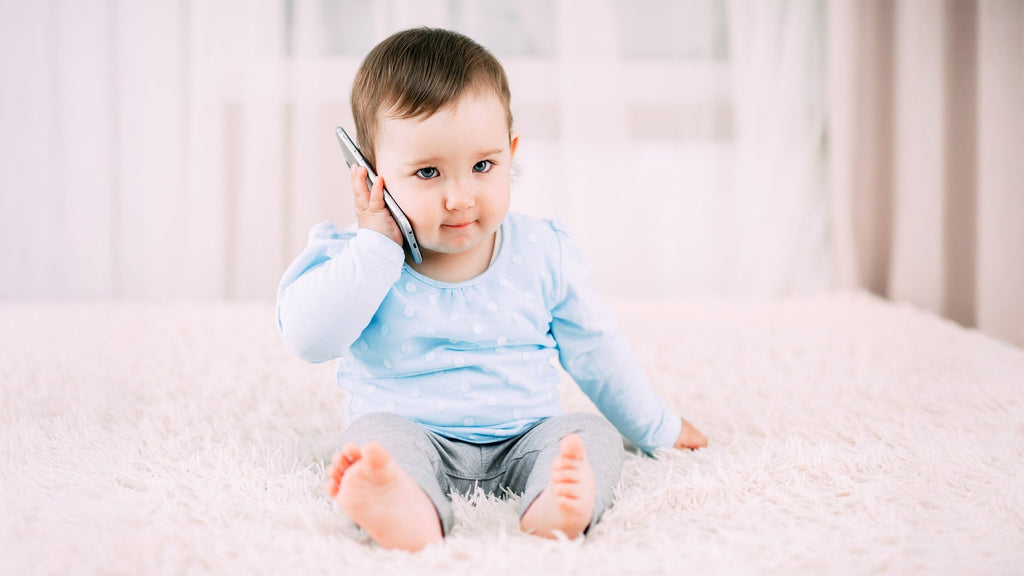
Baby's First Words: What to Expect and When
Becoming a parent is an exciting ride, full of new experiences and milestones. And one of the moments that gets every parent buzzing is when their baby says their first words. It's like a magical moment where they begin to express themselves and connect with the world around them. You might wonder when babies start talking. Well, it's different for every baby, but knowing what to expect can help you enjoy the journey and be ready when that first word comes!
The Journey to Baby's First Words
The journey to your baby's first words is a slow and steady one. From the start, babies are soaking in everything around them—especially language. They listen to all the sounds, including your voice, and start picking up on patterns. The little coos and babbles they make aren't just cute—they're their way of practicing. From these early sounds to saying their first simple word, each step is like building blocks for their future speech.
Remember, every baby moves at their own pace. Some might say their first word a little earlier, while others may take their time. But no matter when it happens, your baby is making amazing progress as they start figuring out how to communicate with you!
The Timeline of First Words
So, when do babies start talking? Most babies will say their first word around 12 months but don't stress if your little one isn't quite there yet. Some babies take their time, and that's totally normal!
By 6 months, you'll start hearing your baby babble away. It's such an exciting phase as they play with sounds, even if they aren't quite words yet. This babbling is actually a crucial step in learning to talk. Around 9 months, you might notice them using simple sounds like "mama" or "dada." While these aren't full words, they're a sign that your baby is getting ready to speak.
By 12 months, you might hear that magical first word—whether it's “mama," “dada," or something else they've been hearing a lot around them. Over the next few months, their vocabulary will start to grow, and by 18 months, you could be hearing a handful of words!
Factors That Influence Baby's First Words
There are a few things that can influence when babies start talking. Genetics definitely play a role, but so does the environment your baby is in. If your little one is surrounded by a language-rich environment—where caregivers are constantly talking, narrating daily activities, or reading aloud—there's a good chance they might start speaking a bit earlier. The more they hear and engage with language, the stronger their foundation for learning to talk.
Temperament is another factor. Some babies are naturally more vocal and eager to express themselves, while others might be a little quieter and take their time. Both are perfectly normal!
Another important factor is hearing. If your baby has any hearing issues, it could slow down their speech development. That's why regular checkups with your pediatrician are so important. Keeping track of their hearing and speech progress will help you ensure everything is developing as it should.
How to Encourage Your Baby's First Words
While every baby develops at its own pace, there are plenty of ways you can help encourage babies when they start talking. Here are a few tips to support their speech development:
Talk to Your Baby
Speak to your baby throughout the day. Narrate what you're doing, describe objects, and share your thoughts. This helps your baby absorb language.
Read to Your Baby
Reading aloud is one of the best ways to encourage language development. Start with picture books and simple, repetitive stories. As your baby gets older, they may even start pointing at pictures and making sounds in response.
Use Simple Words and Phrases
Keep your language simple. Use clear, easy-to-understand words to describe things. For example, instead of saying, "Let’s go to the park," say, "Park time!" to emphasize the word.
Encourage Imitation
Babies love to mimic sounds. When your baby babbles, imitate the sounds they make. This creates a back-and-forth exchange that builds language skills.
Create a Language-Rich Environment
Surround your baby with a variety of sounds and words. Play music, engage in conversations, and expose them to different people and voices.
Common Concerns About First Words
It's natural for parents to worry if their baby doesn't say their first word right on time. When do babies start talking? Most babies say their first word by around 12 months, but some may take a little longer. If your baby hasn't said any words by 18 months or isn't responding to their name or following simple instructions, it's a good idea to check in with your pediatrician. Early intervention can make a big difference if there are any concerns about speech or hearing delays.
That said, it's also important to know that some babies are just "late talkers." They may not say much at first, but they often catch up with their peers over time. Every child is unique, and language development happens on its own timeline. So, don't stress too much—keep supporting your baby as they grow and learn.
Celebrating and Supporting Speech Milestones
When your baby says their first word, it's such an exciting moment—definitely worth celebrating! Whether it's a simple "mama” or "dada," it’s a huge milestone in their development. Every new word is an achievement, so take a moment to enjoy these precious milestones with your little one.
As your baby continues to grow, keep supporting their speech development by engaging with them in meaningful ways. Sing songs, tell stories, and keep talking to them throughout the day. These interactions not only help reinforce their language skills but also give them the tools to expand their vocabulary. You're laying the groundwork for so many wonderful conversations ahead!
Conclusion
The journey to your baby's first words is such an exciting one, with lots of little steps along the way. When do babies start talking? While it can vary, most babies begin speaking around their first birthday. By creating a language-rich environment, engaging with your baby, and being patient, you're helping them reach this important milestone.
Every baby is unique, so trust your instincts and enjoy each stage of the journey. Before you know it, you'll be chatting away with your little one, and you'll look back fondly on the moment they said their first word. Enjoy the ride—it's full of beautiful milestones!

200 Sanskrit Baby Girl Names with Their Meanings
Choosing a name for your baby girl is an exciting yet challenging task. Many parents look for names that are unique, meaningful, and rooted in tradition. Sanskrit, one of the oldest languages in the world, offers a treasure trove of beautiful names with deep meanings. Here are 200 Sanskrit baby girl names, along with their meanings, to help you find the perfect name for your little one.
| Sr. No. | Names | Meanings |
| 1 | Aadhya | First, beginning |
| 2 | Aahana | Dawn, morning glory |
| 3 | Aaradhya | Worshipped, adored |
| 4 | Aarya | Noble, honourable |
| 5 | Aashvi | Blessed and victorious |
| 6 | Abha | Brightness, light |
| 7 | Abhaya | Fearless |
| 8 | Adhira | Lightning |
| 9 | Adira | Strong, powerful |
| 10 | Advika | Unique, one of a kind |
| 11 | Aesha | Life, living |
| 12 | Aishani | Goddess Durga |
| 13 | Aishwarya | Wealth, prosperity |
| 14 | Akanksha | Desire, wish |
| 15 | Akshara | Eternal, indestructible |
| 16 | Akshita | Wonder Girl, secure |
| 17 | Amani | Wishes, aspirations |
| 18 | Amara | Immortal |
| 19 | Amaya | Night rain |
| 20 | Ambika | Goddess Parvati |
| 21 | Amrita | Immortal, divine nectar |
| 22 | Anika | Graceful, brilliant |
| 23 | Anisha | Continuous, eternal |
| 24 | Anita | Gracious, merciful |
| 25 | Anjali | Offering tribute |
| 26 | Anju | Blessing, gift |
| 27 | Ankita | Marked, adorned |
| 28 | Anshika | Minute particle, beautiful |
| 29 | Anushka | Grace, favour |
| 30 | Anvi | Goddess of the forest |
| 31 | Anya | Inexhaustible, limitless |
| 32 | Aparna | Another name of Goddess Parvati |
| 33 | Aradhana | Worship, prayer |
| 34 | Archana | Worship, Respect |
| 35 | Arpita | Dedicated, offered |
| 36 | Arya | Noble, honoured |
| 37 | Ashwini | Light, horse tamer |
| 38 | Asmita | Pride, self |
| 39 | Astha | Faith, belief |
| 40 | Atreyi | Name of a river |
| 41 | Avani | Earth |
| 42 | Avantika | Queen, princess |
| 43 | Ayana | Path, road |
| 44 | Ayati | Royal, grandeur |
| 45 | Baishali | An ancient city's name |
| 46 | Bala | Young girl |
| 47 | Bandita | Blessed |
| 48 | Bhagya | Fortune, luck |
| 49 | Bhanu | Sun |
| 50 | Bharati | Goddess Saraswati |
| 51 | Bhavya | Splendid, grand |
| 52 | Bhoomi | Earth |
| 53 | Bina | Melodious, musical |
| 54 | Bindiya | Drop, point |
| 55 | Charu | Beautiful, attractive |
| 56 | Chaitali | Born in the month of Chaitra |
| 57 | Chandana | Sandalwood |
| 58 | Chandra | Moon |
| 59 | Chandrika | Moonlight |
| 60 | Charvi | Beautiful, graceful |
| 61 | Chhavi | Reflection, radiance |
| 62 | Damini | Lightning |
| 63 | Darshana | Vision, sight |
| 64 | Deepa | Light, lamp |
| 65 | Deepika | Little light, lamp |
| 66 | Deepti | Brightness, flame |
| 67 | Devika | Little goddess |
| 68 | Dhara | Constant flow, earth |
| 69 | Dhriti | Patience, courage |
| 70 | Diya | Light, lamp |
| 71 | Eesha | Goddess Parvati |
| 72 | Eshana | Desire, wish |
| 73 | Esha | Purity, divine |
| 74 | Gargi | An ancient scholar |
| 75 | Gayatri | A Vedic hymn |
| 76 | Geeta | Sacred song, scripture |
| 77 | Gitanjali | Collection of songs |
| 78 | Gauri | Fair, Goddess Parvati |
| 79 | Gautami | River Godavari |
| 80 | Hansika | Swan, elegant |
| 81 | Harini | Deer |
| 82 | Hemangi | Golden body |
| 83 | Himani | Goddess Parvati |
| 84 | Ila | Earth |
| 85 | Indira | Goddess Lakshmi |
| 86 | Isha | Lord, master |
| 87 | Ishani | Goddess Durga |
| 88 | Ishita | Desired, greatness |
| 89 | Jagruti | Awareness, awakening |
| 90 | Jahnavi | River Ganga |
| 91 | Jaya | Victory |
| 92 | Jayanti | Victorious |
| 93 | Jayashree | Victorious goddess |
| 94 | Jeevika | Source of life |
| 95 | Jhanvi | River Ganga |
| 96 | Juhi | Flower, jasmine |
| 97 | Jyoti | Flame, light |
| 98 | Kajal | Eyeliner, kohl |
| 99 | Kala | Art, Talent |
| 100 | Kalpana | Imagination, fantasy |
| 101 | Kamala | Lotus |
| 102 | Kanchana | Gold |
| 103 | Kanishka | Small, ancient king |
| 104 | Kanta | Desired, lovely |
| 105 | Kavya | Poem, poetry |
| 106 | Keerthi | Fame, glory |
| 107 | Kiran | Ray of light |
| 108 | Kirtana | Hymn, song |
| 109 | Kumari | Princess, youthful |
| 110 | Kusum | Flower |
| 111 | Lalita | Graceful, charming |
| 112 | Lavanya | Grace, beauty |
| 113 | Leela | Divine play |
| 114 | Lina | United, absorbed |
| 115 | Madhavi | Sweet, honey |
| 116 | Madhuri | Sweetness, sugar |
| 117 | Mahika | Dew drops, earth |
| 118 | Malati | Jasmine flower |
| 119 | Manasi | With a sound mind |
| 120 | Manisha | Wisdom, intelligence |
| 121 | Maya | Illusion, goddess |
| 122 | Meera | A devotee of Lord Krishna |
| 123 | Megha | Cloud |
| 124 | Mihika | Mist, fog |
| 125 | Minakshi | Fish |
| 126 | Mira | Ocean, boundary |
| 127 | Mridula | Soft, tender |
| 128 | Mukta | Pearl, liberated |
| 129 | Nalini | Lotus |
| 130 | Namrata | Modesty, humility |
| 131 | Nandita | Cheerful, happy |
| 132 | Nayana | Eyes |
| 133 | Nidhi | Treasure, wealth |
| 134 | Nikita | Earth, victorious |
| 135 | Nila | Sapphire, blue |
| 136 | Nirali | Unique, different |
| 137 | Nisha | Night |
| 138 | Nithya | Eternal |
| 139 | Nivedita | Dedicated to service |
| 140 | Ojasvi | Bright, radiant |
| 141 | Omkari | Divine, sacred |
| 142 | Padma | Lotus |
| 143 | Pallavi | New leaves, bud |
| 144 | Pari | Fairy, angel |
| 145 | Parvati | Daughter of the mountain |
| 146 | Pavitra | Pure, sacred |
| 147 | Pooja | Worship |
| 148 | Pragya | Wisdom, intelligence |
| 149 | Pramila | Pleasant, wife of Arjun |
| 150 | Pranavi | Sacred syllable Om |
| 151 | Pratibha | Light, splendor |
| 152 | Preeti | Love, affection |
| 153 | Priya | Beloved, dear |
| 154 | Priti | Love, satisfaction |
| 155 | Radha | Beloved of Lord Krishna |
| 156 | Ragini | Melody, music |
| 157 | Rajani | Night |
| 158 | Rajeshwari | Queen of queens |
| 159 | Raksha | Protection |
| 160 | Ramya | Pleasing, delightful |
| 161 | Rani | Queen |
| 162 | Rashmi | Ray of light |
| 163 | Ratna | Jewel, gem |
| 164 | Rekha | Line, limit |
| 165 | Rhea | Flowing, stream |
| 166 | Riddhi | Prosperity, good fortune |
| 167 | Rina | Dissolved, melted |
| 168 | Ritika | Movement, joy |
| 169 | Riya | Singer, graceful |
| 170 | Roja | Rose |
| 171 | Roshni | Light, brightness |
| 172 | Ruchi | Taste, delight |
| 173 | Rukmini | Consort of Lord Krishna |
| 174 | Saanvi | Goddess Lakshmi |
| 175 | Sadhana | Worship, practice |
| 176 | Sakshi | Witness, evidence |
| 177 | Saloni | Beautiful, charming |
| 178 | Samhita | Put together, joined |
| 179 | Sana | Brilliant, praise |
| 180 | Sandhya | Evening, twilight |
| 181 | Sangita | Music, musical |
| 182 | Sanika | Flute |
| 183 | Sanjana | Gentle, creator |
| 184 | Sarika | A thing of value |
| 185 | Sarita | River |
| 186 | Satya | Truth |
| 187 | Savitri | Goddess of knowledge |
| 188 | Seema | Boundary, limit |
| 189 | Shaila | Goddess Parvati |
| 190 | Shanaya | Eminent, distinguished |
| 191 | Sharada | Goddess of learning |
| 192 | Sharmila | Joyful, comfort |
| 193 | Shashi | Moon |
| 194 | Sheela | Cool, good character |
| 195 | Shivani | Goddess Parvati |
| 196 | Shreya | Best, auspicious |
| 197 | Shruti | Expert, hearing |
| 198 | Simran | Remembrance, meditation |
| 199 | Smita | Smile, joyful |
| 200 | Sneha | Love, affection |
Why Choose a Sanskrit Name for Your Baby Girl?
Sanskrit names carry profound meanings and cultural significance, making them a popular choice for baby names. They are often derived from ancient texts, nature, and deities, reflecting the rich heritage and traditions of India. Choosing a Sanskrit name for your baby girl not only honours this cultural legacy but also provides a name with deep, positive connotations. These names are timeless, elegant, and unique, setting your child apart with a name that has historical depth and modern relevance.

The Ultimate Baby Bathing Checklist for Your Baby's First...
Bringing your newborn home is a magical and joyous moment, but it also comes with a list of responsibilities, one of which is your baby's first bath. Bathing newborns is one of the things that many new parents worry about. We are familiar with the emotion. Even the most composed person can become anxious when bathing a newborn for the first time!
Fret not! We've crafted the ultimate baby bath essentials checklist to ensure that this special moment is not only stress-free but also a memorable bonding experience between you and your bundle of joy.
Bath time is a great chance for you and your baby to bond. It's also a great way to just relax and have fun.
Creating the Base for a Successful Baby Bathing Experience

-
Gather Your Supplies
Gather all the essential items for your baby bath products ahead of time – collect baby oil, gentle baby soap, a soft washcloth, baby shampoo, baby lotion, and a comfortable hooded towel. This practice will help you avoid the need to leave the baby unattended during the bath to search for these essential items.
-
Choose the Right Time
The timing is entirely in your hands, but it's recommended to choose a moment when you have the luxury of time and won't feel rushed. Aim to give your newborn baby's first bath within a week of birth, steering clear immediately after feeding or when they're overly tired.
Babies are often more alert in the morning, making it a favourable time for some parents. Alternatively, others may prefer scheduling the baby's first bath in the early evening as part of the bedtime routine. During the wind-down process, consider incorporating the bath into a calming sequence that includes a final bottle or nursing session, reading a book, and a gentle lullaby.
-
Maintain a Comfortable Room Temperature
Babies are sensitive to temperature changes, so ensure that the room is comfortably warm. A chilly environment can make the baby uneasy, while a hot room may lead to overheating.
How to Give a Newborn First Bath?
-
Pre-Bath Preparations:
Begin by organizing all the baby bath essentials within arm's reach. This prevents you from scrambling for supplies while holding a slippery baby. Lay out a soft towel on a flat, secure surface, such as a changing table, and keep diapers and clothes nearby for a swift post-bath routine.
-
Fill the Tub with Warm Water
Babies lose body heat rapidly, especially when undressed, so it's crucial to ensure the bathwater is at a comfortable temperature. Fill the baby bathtub with about 2 to 3 inches of warm water, ensuring it's not too hot. You can test the water temperature with your elbow or a bath thermometer; it should be around 37°C (98.6°F).
-
Undress the Baby
Gently undress your baby, cradling their head and neck with one hand. It's advisable to keep the baby's head above water and support their neck and back throughout the bath.
-
Gently Clean the Baby
Using a soft washcloth, gently cleanse the baby's face without soap. For the rest of the body, use a small amount of natural baby bath products. Pay special attention to skin folds, such as the neck, armpits, and diaper area. Be cautious around the umbilical cord stump; keep it dry and clean until it falls off naturally.
-
Rinse and Dry
After washing, gently pour clean, warm water over the baby's body to rinse off any soap. Once the bath is complete, promptly wrap the baby in a soft, hooded towel to keep them warm. Pat the skin dry, ensuring all creases are moisture-free to prevent irritation.
-
Post-Bath Care
Apply a gentle baby lotion to keep the skin moisturized. Dress the baby in a clean diaper and comfortable clothing. Remember, the first few baths should be brief—about 5 to 10 minutes—to prevent the baby from getting too cold.
Additional Tips for a Smooth Baby Bathing Experience
-
Stay Calm and Confident
Your baby can sense your emotions. Maintaining a calm demeanour will help your baby feel secure during their newborn baby's first bath.
-
Safety First
Never leave your baby unattended during bath time. If you need to step away, wrap the baby in a towel and take them with you.
-
Make It Enjoyable
Sing or talk to your baby during the bath to make the experience pleasant and engaging.
For parents searching for the best baby bath products in India, choosing natural baby bath products is a wonderful way to prioritize your baby's delicate skin. With the right baby bath essentials, you'll master how to give a newborn your first bath in no time!
Bathtime is a delightful experience for both babies and their new parents. Even if your little one appears less than thrilled initially, keeping the event short and sweet can make a world of difference. Before you know it, the sound of running water will have your baby squealing with joy. After the bath, remember to dry your baby gently with a soft towel and add a touch of Moh Malai Baby Body Lotion for an extra dose of post-bath comfort.

The Best Books to Read During Each Trimester of Pregnancy
Pregnancy is a journey filled with excitement, questions, and a rollercoaster of emotions. As an expectant parent, you want to prepare for every step of this incredible experience. One of the best ways to do that is through reading. Books to read during pregnancy can be your best friend, guiding you with information, tips, and reassurance as you prepare to welcome your little one into the world. If you’re wondering about the books to read during pregnancy, we’ve got you covered. Here’s a trimester-by-trimester guide to help you find the right reads.
First Trimester: Laying the Foundation
The first trimester is all about adjusting to that life-changing news. It’s a time of learning, preparing, and navigating those early pregnancy symptoms. Here are some books to read during pregnancy that can guide you through these first weeks:
“What to Expect When You’re Expecting” by Heidi Murkoff
This classic is a must-have for any expecting parent. It’s packed with information about the changes happening in your body, what your baby is going through, and how to handle those common concerns. The conversational tone makes it feel like a friend is walking you through every step of the journey. It’s definitely one of the most reliable books for first-time moms to read during pregnancy.
“I’m Pregnant, Not Terminally Ill, You Idiot!” by Lalita Iyer
Pregnancy isn’t just about medical advice—it’s about real-life experiences, too. This hilarious yet heartfelt book offers a refreshing perspective, with relatable anecdotes and witty observations that will make you laugh and feel totally understood. It’s a great reminder that you’re not alone on this journey.
“The Mama Natural Week-by-Week Guide to Pregnancy and Childbirth” by Genevieve Howland
If you’re leaning toward a natural approach, this guide is a treasure chest of holistic advice. It covers everything from nutrition to birth plans, giving you a sense of control and confidence during these early weeks. Plus, it’s beautifully illustrated and easy to follow, making it one of the most helpful books to read during pregnancy.
Second Trimester: Gearing Up
The second trimester is often called the “honeymoon phase” of pregnancy. You’re likely feeling more energetic, excited, and ready to dive deeper into the journey. It’s a great time to focus on topics like childbirth preparation and making informed decisions. Here are some books to read during pregnancy that can guide you through this phase:
“Passport to a Healthy Pregnancy” by Dr. Gita Arjun
Written by a leading obstetrician, this book is specifically tailored to Indian moms. It offers practical advice on diet, exercise, and prenatal care, making it one of the most culturally relevant books to read during pregnancy if you’re in India or want a global perspective.
“Ina May’s Guide to Childbirth” by Ina May Gaskin
If you’re considering a natural birth, this empowering book is must-read. Ina May Gaskin shares real-life stories and tips that’ll help you trust your body’s ability to give birth. It’s inspiring and deeply reassuring, making it a perfect choice for those looking to explore the power of natural childbirth.
“Expecting Better” by Emily Oster
For those who love data and research, this book is a game-changer. Emily Oster, an economist, dives into the research behind common pregnancy rules and helps you make informed decisions about what’s best for you. It’s an eye-opener that will change the way you approach pregnancy.
Third Trimester: Preparing for the Big Day
As your due date approaches, it’s time to start focusing on labour, delivery, and caring for your newborn. These books to read during pregnancy will help you get ready for the big day:
“The Birth Partner” by Penny Simkin
This book isn’t just for your birth partner—it’s for you too! It offers detailed guidance on what to expect during labour, how to manage pain, and ways to support the birthing process. It’s super practical and incredibly empowering, helping both you and your partner feel more prepared.
“Happiest Baby on the Block” by Harvey Karp
Though it’s technically about newborn care, this one’s a great read before your baby arrives. Dr. Karp shares techniques to soothe a crying baby and help them (and you) sleep better. It’s a total lifesaver for new parents, giving you the tools to feel more confident once your little one arrives.
Bonus Recommendations for All Trimesters
Some books to read during pregnancy are super helpful throughout the entire journey. Here are a couple of extras you might want to consider:
For Emotional and Mental Well-Being: “The Pregnancy Handbook for Indian Moms” by Vinita Salvi
This book takes a holistic approach to pregnancy, covering everything from the physical changes to your emotional well-being. It’s a great read if you’re looking for a balanced, thoughtful guide to help you navigate all the ups and downs of pregnancy.
For Fathers: “Pregnancy Handbook for Dads-To-Be” by Steven Bell
This one’s for the dads! It helps them understand what to expect during pregnancy and how to support their partner best. It’s one of the best books to read during pregnancy for fathers who want to feel prepared and involved.
Tips for Making the Most of Your Pregnancy Reading Journey
Here are some tips to get the most out of your reading during pregnancy:
-
Start Early:
Don’t wait until the last trimester to read the books. The sooner you start, the more confident you’ll feel as your pregnancy progresses.
-
Take Notes:
Highlight key sections or jot down any questions you want to ask your doctor. It’ll help you stay on top of everything.
-
Read Together:
Share your reading with your partner, so you’re both on the same page—literally! It’s a great way to bond and stay informed together.
-
Mix It Up:
Balance out the more serious, informative books with some lighter, fun reads. It’ll keep things enjoyable and give you a nice break from the heavy stuff.
Conclusion
Pregnancy is a journey like no other, and the right books can make all the difference. Whether you’re dealing with morning sickness in the first trimester or getting ready for labour in the third, there’s so much knowledge out there to help you along the way.







